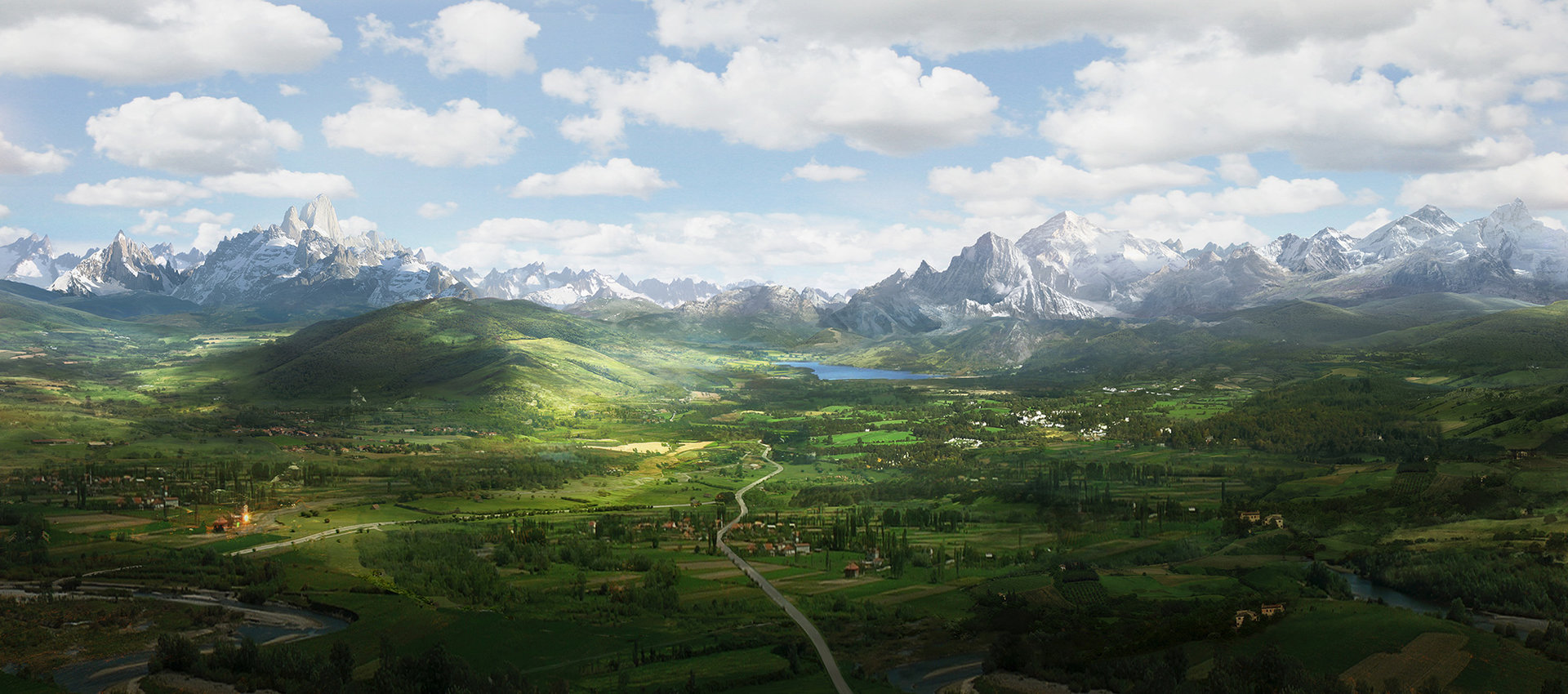
This is a custom adaptation of the Forgotten Realms setting, and the Dungeon Masters and Admin of TDN reserve the right to change further details regarding the setting as they might arise. For the most part, the history, geography, pantheons, and other facets of the setting remain just as they were except when specifically stated to be otherwise on this page or other ones of the wiki, such as individual class pages. The change to the outcome of the Time of Troubles is designed to believably adjust the Forgotten Realms towards a less-powerful magic environment. We want magic to feel special, monsters to be scary, players to be big actors in setting events, and for the world to be uncertain and open to change, all factors that the default setting made difficult. Few individuals even among Adventurers would have even been exposed to magic beyond the second spell level. Please see the Server Vision page for more information regarding the magic setting.
Story Overview
During this time, Tethyr was suffering through the Interregnum, a period of over two decades (1347 DR - 1369 DR) where there was no monarch. Chaos was rampant, nobles were hunted and killed, and no known royals existed. Countless people tried to claim the crown, but none were successful.
Pirate activity remained steady until, in 1363 DR, minotaur pirate Balura Ironprow united most of the monstrous pirates under one flag called the Iron Fleet. Finally, with central leadership, the armada began wreaking havoc through tradeways and across the coast.
North of Tethyr, in Amn, the Council of Six eventually suffered their own misfortunes during a time known as The Winter of Teeth. Hammer 1368 DR, two ogre magi led tens of thousands of monsters north out of the Small Teeth Mountains. Over the course of the next 18 months, two wars between the monsters and humans would see western Amn ravaged, Athkatla captured - its ruins claimed by the Ogre-King Sythillis as Sythillisia - and trade through the region devastated.
~~~
We return to the present. The year is 1369 DR. Nature and civilisation alike has been heavily affected by the Longest Year, largely for the worse. Magic is still slowly returning. Weak spells are able to be cast, power is slowly trickling back into artifacts, magical creatures are poking their heads back out, and undead are reanimating. Sages and wizards still do not yet have the answers, but everyone can at least agree that some sense of normalcy appears to be returning to the Weave.
The regard of magic has changed universally, and its use has become more ritualistic than ever, for a spellcaster in such arduous times must clutch onto whatever help they can secure in making the Weave manifest. Many distrust any and all magic, whether divine or arcane, and some even see its return as something to oppose, completely outlawing it, or limiting its use to those licensed by a local government. No matter the country or kingdom, magic is less understood and more unpredictable than ever, and subsequently more often than not simply feared and discriminated against, though not without good reason. The tales of the Weave's now deadly vicissitudes are rampant, and many are the tales of those personally affected by a spell unintentionally gone awry. Many lost family and friends alike to casters and their irresponsible use of magic, and even well-intentioned priests who sought to cure the sick and injured have become blood-guilty by the mercurial results of their spellcasting.
The common people know little of magic, and understand it only as a force to be reckoned with, with mysterious arcanists and divine servants behind great and unbelievable events. Those more worldly see it as yet another tool, but one to be checked no differently than the presence of armed men. These factors breed suspicion if not outright hostility in people towards any who practice magic in any form. While magic is not outlawed in many parts of the world, countless will find the practice of magic to be suspicious, and may readily assume dark arts or a more foul power at work, particularly in Amn where public spellcasting is a breach of the law itself.
Tethyr has a new court. Queen Zaranda wears the monarch’s crown alongside her husband King Haedrak III - who was the rightful heir but abdicated the throne to the people’s choice of Zaranda. Courtly titles and positions, duchies, counties, sheriffs, and mayors, have been assigned and the Queen is currently restructuring Tethyr’s laws.
The Iron Fleet continues to take advantage of the hard times of Tethyr and Amn, and their recent alliance with Sythillisia gives them a powerful trading partner on the mainland.
The Council of Six faces very hard times. Esmeltaran has become Amn’s current capital, while its army sits in Crimmor. The Iron Fleet greatly hinders water-traffic out of Amn. The Trade Way Pass through the Small Teeth has only just been reopened which has all but completely cut off Murann from mainland Amn. To make matters worse, talks of Amnian cities seceding have gained momentum.
Ogre-King Sythillis licks his wounds and bides his time in his ruin-capital. Goldspires, the massive temple-city, just north of his city was spared in exchange for them blessing his trade. This is said to have paid off as Sythillisia prospers from trade through monsters in the Cloud Peaks and Nelanther pirates.
Murann, the Sailor's City, nurses the beginnings of a refugee crisis. Nearly 15% of its typical 80,000 year-round natives are now refugees who are struggling to fill the roles left by those called to war or escaping the region. These unfilled roles make feeding the extra mouths more difficult and with an intention of opening the Trade Way Pass again the problem is only expected to worsen.
The winds of change blow, and all that remains is to see where they now take the Swordbelt...
Local Events
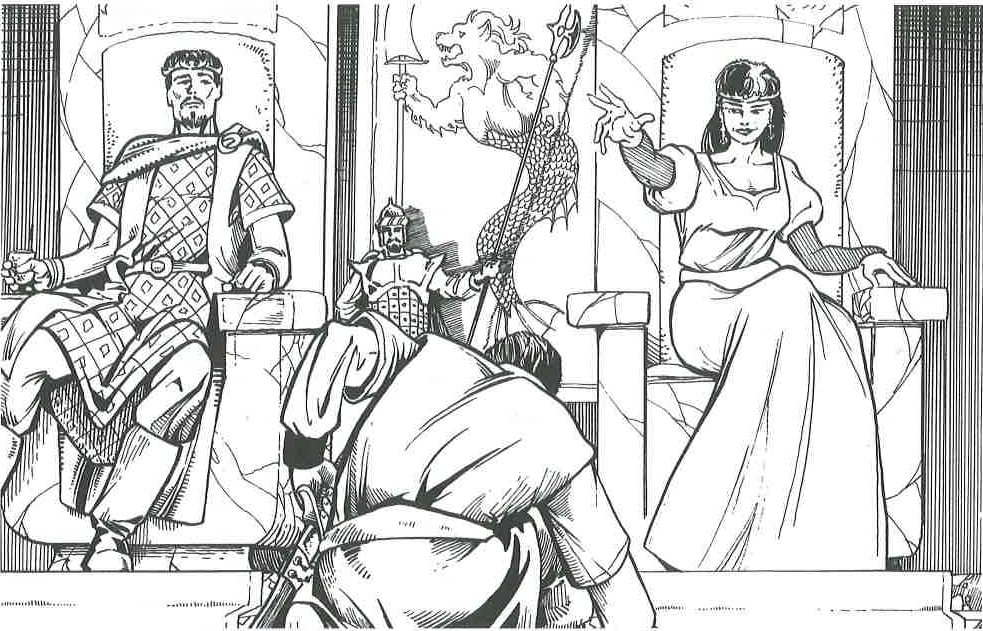
Zaranda Star’s rise towards the final position of Queen began in 1366 DR with the purchase of County Morninggold and its titles. After spending time isolated to repair the keep, she embarked on a mercantile career. When Zaranda returned, she found Tethyr was no different. Thieves and Bandit-Barons continued to rule and travel through the country was dangerous.
For the next two years, Zaranda would travel back and forth across Tethyr supporting commonfolk against their bandit-lords and upending their oppressive rule. She would be attacked; she would be betrayed, drugged, and arrested; she would root out pirates; she’d foil kidnappings and remove petty tyrants; and eventually she’d build a growing entourage of armed villagers and experienced adventurers and find herself the choice of the people for queen of Tethyr. These years would be called the Reclamation.
The culmination of her years of work found her at the gates of Myratma, outside the walls looking up at Prince Jhannivvar, another who currently staked a claim on the throne. The first Siege of Myratma lasted a month but ended with the defeat of Zaranda’s Loyalist Army and Zaranda captured.
While the events surrounding Zaranda were occurring in Tethyr. A man in Waterdeep had been revealed at a large noble holiday gala as the last true son of House Tethyr. For over a month Prince Haedrak conferred with the Lords and with many an ally, consolidating an army that would, as he said, “allow us to support the peoples’ desire for just rulership and peace.” Haedrak would have no official sanction from Waterdeep, but he did eventually sail south with the army he sought.
He arrived in Zazesspur to find the city attacking itself. The Low City was warring with the High in response to the council betraying Zaranda. With the help of Haedrak’s navy and his soon-landed troops, Zazesspur was once again loyal to the people and Zaranda Star, though many wanted to acknowledge allegiance to Haedrak as the rightful heir. In his first Tethyrian address, the crown prince assured the people that he too supported their choice of Zaranda Star, and that he had every intention of both reuniting the Loyalist Reclamation Army to break the entrenched forces at Myratma and rescuing Zaranda from the Pretender’s clutches.
Haedrak was true to those words and after a second siege of Myrtama, Zaranda was rescued and Prince Jhannivvar was slain. Finally, after over twenty years of conflict and disarray, the people had their new rulers. In Alturiak 1369 DR, Zaranda Star and Prince Haedrak became Queen Zaranda Rhindaun and King Haedrak Rhindaun III. Queen Zaranda would rename Ithmong to Darromar where she’d rule from the royal palace of Faerntarn. The Rhindaun Dynasty had begun.
*Lands of Intrigue
The Pirates' Pardon
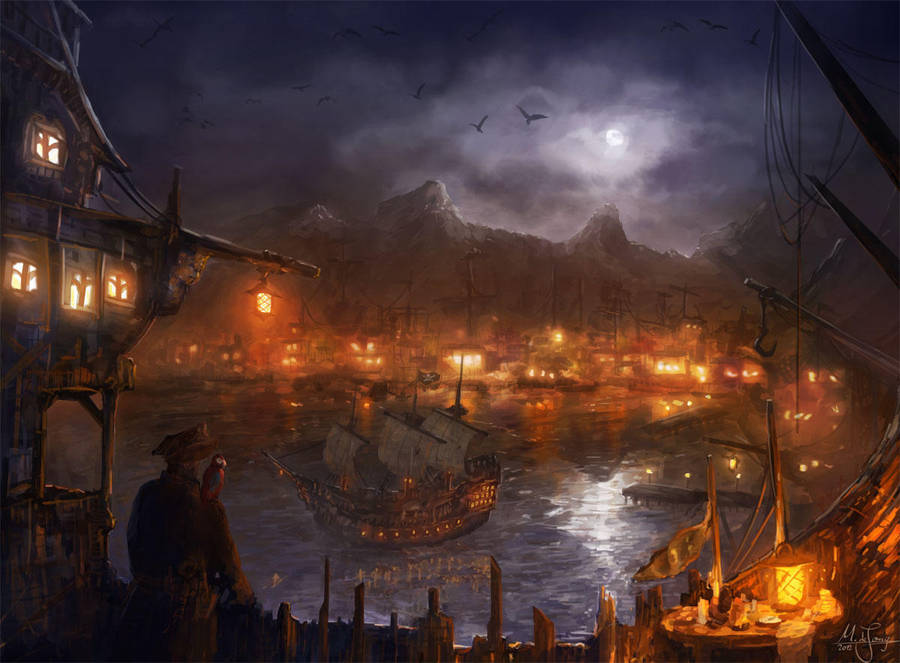
One of Queen Zaranda’s first edicts on her new throne was a controversial one, but widely regarded as necessary. The Nelanther fleet under the minotaur captain Balura Ironprow consolidated orcs, lizardfolk, ogres, minotaurs, and other nonhumans; any human pirates were killed, enslaved, or forced to flee. While Tethyr had many new admirals, the navy’s ships were a mismatched and outdated fleet, not up to the task of defending the entire Tethyrian coastline. The Pirates’ Pardon was meant to combat the mighty Iron Fleet by offering a formal pardon to all non-monstrous pirates, both incarcerated and still at sea, with the condition that they accepted a letter of marque from Tethyr and lended their ships and crews to the defense of the coast. The privateering employment that the letter provided allowed any spoils from raiding other pirate ships, but forbade any hostile acts against Tethyr or its neighbors. The deal promised to be lucrative, and perhaps to even outlast the Nelanther pirate threat. The large majority of human pirate crews accepted their unexpected pardon, all knowing that the alternative was to be caught one at a time by Balura’s monstrous armada.
Within a moon many infamous pirate clans had accepted the pardon, including the Black Skulls led by Eamon Blaskul. Fleet-Captain Eamon, who then convinced two other prominent pirates to join his fleet, Bahija the Fair and Raurivyl Ornshield commanded nearly ten ships and made the Black Skull Privateers one the largest and most experienced fleets, of both pirates and privateers, outside the Iron Fleet.
The effect of the pardon, combined with the unity of the counties and duchies was felt within a few months. Official navy ships combined with small privateer fleets kept the coast and local bays as safe as anyone could remember. The only exception was Tarseth Bay. The protective blockade of Sythillisia by the Iron Fleet brought patrols of pirates to the mouth of the bay and shipping through the area was still very dangerous.
Amn and The Winter of Teeth
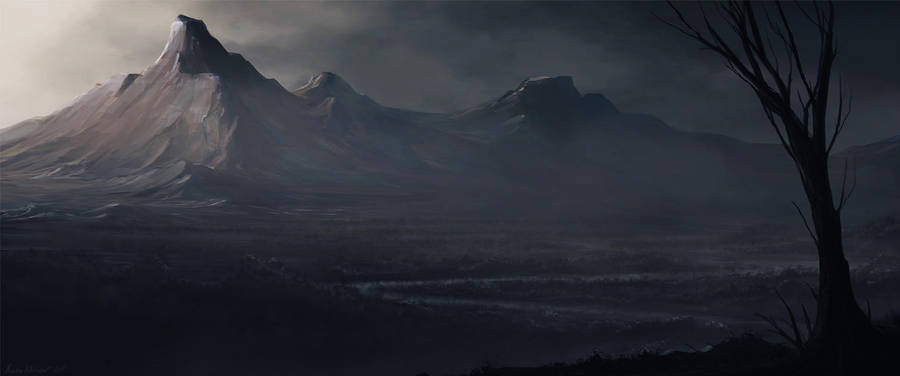
Amn and Tethyr had always treated the Small Teeth mountains with heavy caution. Though the mountain range was small and its few passes safe enough, all knew that the mountains harboured tunnels, deep, dark, and old. There, vile creatures bred, and multiplied, and waited.
During the month of Hammer in 1368, two ogre warlords had consolidated enough power under the Small Teeth to lead a vast and varied army out from their mountain lairs. The war began with trolls leading a small horde to besiege Eshpurta (where Amn's official army was consolidated) while hill giants and ogres damaged the Star and Axe Bridges. These small, but combined efforts would prove devastating for Amn as its army became occupied and cut off from the west. With their plan in motion, Sythillis and Cyrvisnea led a horde of 30,000 kobolds, 12,000 goblins, 10,000 hobgoblins, 24 hill giants, 800 ogres, and a large contingent of Cyricist priests, half-orcs and warriors from the Twin Towers of the Eternal Eclipse out from the dark, equipped and in deadly force. Their ambitions quickly became horrifyingly obvious as the horde moved not onto the smaller port city of Murann to the south... but instead marched north into mainland Amn. Imnescar was quickly overrun and violently taken. From there, the force besieged Purskul, but instead of settling in, the bulk of the horde continued towards Athkatla, the jewel of Amn. To make matters far worse, the Iron Fleet began blockading the coast surrounding Athkatla making an escape by ship dangerous.
Spring of 1368 came into history as the Season of Rutted Roads and Heavy Ships as chaos erupted through the capital. Over a hundred thousand refugees fled Athkatla north or east. Merchants and nobles were killed as everyone tried to escape with anything they could. Boats were captured or sunk, wagons and horses were suddenly worth dying for, and the Council fell into disarray as they struggled to control the situation while their guards and the (now weakened) Cowled Wizards were killed themselves. Finally, the Council, along with the few Cowled Wizards remaining, all the major families, their guards, and hired mercenaries fled Athkatla. Three quarters (3,000 troops) of the city’s garrison also left with them. By the time the Winter Horde arrived the city's streets were covered in its own blood and those left to guard it had fled with everything they could too. The riches of Athkatla were ripe for the taking, and the massive horde entered the capital unopposed. Sythillis, now ruling over the ruined city, claimed the title King of Sythillisia.
While Athkatla was destroying itself Amn's army was facing off against another band of monsters in the south. The Skullgnasher giants (21 hill giants) and Spearbiter goblins (12,000 goblins) had occupied the South Road waiting to slow down the marching army as it was forced around Lake Esmel. Though the Amnian Army was successful it took them a considerable amount of time to make the journey and eventually learn what had become western Amn.
Those abandoning Athkatla going east sought safety within Crimmor. The Caravan Capital of Crimmor had strong walls and a far longer period of time to prepare - it took the Sythillisian Army nearly a month before they settled into marching east under the command of the Ogre Mage Cyrvisnea. When the attack did come at the beginning of Kythorn, Crimmor was far better prepared than Athkatla and the city was able to hold out until both branches of the split Amnian Army and their over 20,000 troops could arrive. Through a long and costly (to both sides) battle the Amnian Army was able to finally break up the siege by the beginning of Eleint. Many of the monsters fled back to Sythillisia but the rest splintered into wandering bands making the countryside very dangerous to travel.
Crimmor began repairs, however, the Council of Six chose to move to Esmeltaran where the city would once again act as Amn’s new capital. Major families jumped at the chance for favors as they ‘donated’ buildings and resources to the Council’s move into the expensive city. Crimmor would continue to host the army due to its strategic importance. The Council also prohibited attacks against Sythillisia for fear of another attack.
In Marpenoth, Crimmor eventually sallied forth to offer relief to Purskul, which had been besieged and admirably held due to its vast grain stores and hardy orc and half-orc population, most all of which fought in Purskul’s defense. Most of the nation east of the Trade Way suffered very little from the war - aside from the few places along the South Road where the Skullnasher-Spearbiter horde had occupied. For many months both Sythillisia and Amn kept to themselves. Goldspires had been spared in exchange for blessing the King's new trade and Sythillisia became a trade hub for both the Iron Fleet and monsters in the Cloud Peaks.
Everything continued peacefully until the end of Alturiak of the next year, 1369. It's at that time waves of monsters began emerging from the Wealdath and marching north into the Small Teeth. Time would show their destination to eventually be Sythillisia and to the horror of Amn, a quickly growing population. The Army in Crimmor is quickly notified and the city begins preparing. What the intention of the growing population was won't ever be known because in Tarsakh questionable politics found Ogre Mage Cyrvisnea, Queen of Sythillisia assassinated. Enraged, Ogre-King Sythillis forced all his subjects into his new army and called upon the Iron Fleet to protect his city as he personally led the Sythillisian Army towards Crimmor. When the Sythillisian Army arrived at Crimmor a large force immediately engaged the city while the rest settled in for a long siege. Furiously, King Sythillis battered the city with spells for the first day before retiring back with those preparing the siege. The siege would continue for many rides while the monsters were continuously reinforced by the Wealdath.
In Tethyr the new Queen decided to take it upon herself, much to the annoyance of the elves, and called for the culling and stoppage of all the monsters leaving the forest. Each of the northern Dukes and Counts did all they could to halt the waves of monsters and in time they made good progress. The slowing of the reinforcements from the Wealdath would eventually prove to be what Amn's General Craumerdaun would need to scatter the Sythillisian Army, also known as the Winter Horde. With the Ogre King in retreat back to Sythillisia with about half of the living monsters and the other half dispersing into the wilds and countryside, Crimmor and Amn could again rest easy with the worst of the war behind them - or so people hope.
Much of the Sythillisian Army was reduced to roaming, dangerous bands, and Amn’s strategy was now predominantly defensive rather than risking the vast monstrous army coming together a third time in the face of an actual mobilized force of their own. With the Iron Fleet still active around Sythillisia, barges cautiously resumed light trade on the River Esmel, guarded by flat-bottomed ships carrying mercenaries and piloted by captains lured by the lucrative activity. The Alandor never saw too much traffic again, with most refusing to go near the ruined capital and now-claimed Sythillisia. The Council now bickers back and forth about the fate of their trade and how to keep talks of secession in Riatavin and Trailstone from spreading towards Trademeet and Murann.
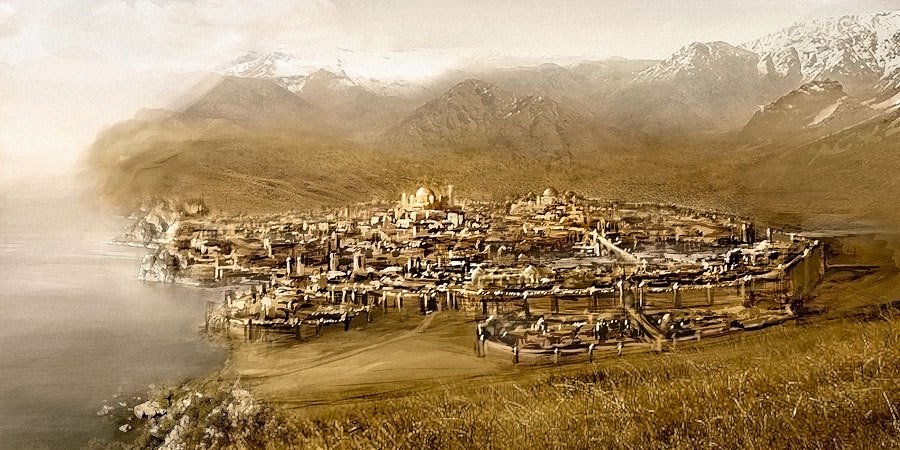
Few stories have left the city of Athkatla since its fall. The city and its surroundings became a dark place, stained by the vile acts performed there. With Ogre-King Sythillis refocusing his purpose towards growing trade with the pirates and northern monster tribes, the monsters looked to become even more fat with riches and plunder. It was said one could travel through Athkatla still, if one were skilled enough, but few tested the theory... and fewer yet wished to see what the once grand city had been reduced to in but a year at the hands of the Ogre-King.
It was safe to say that Amn’s opulence and splendour would not recover easily, if it ever did at all. Athkatla’s fate was a cruel awakening to the grim state of the world, and many feared the success of Sythillisia and Nelanther’s pirates would encourage other would-be warlords to make their own attempts to act on their greed.
Nelanther Pirates and the Iron Fleet
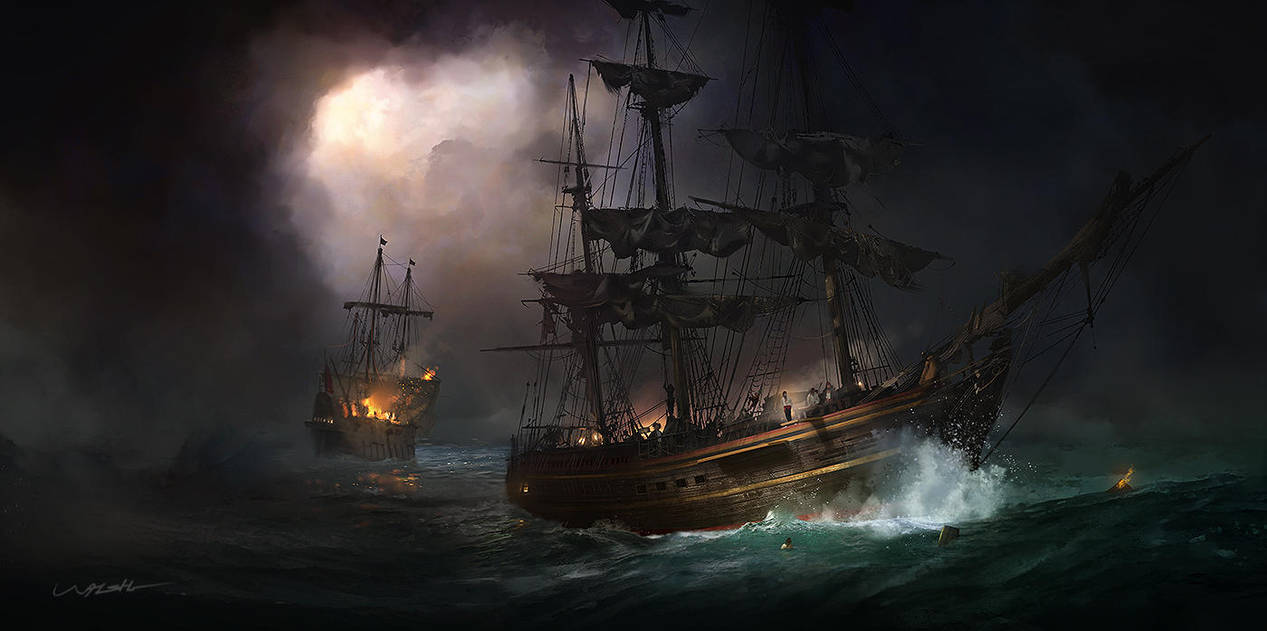
In 1359 during the Longest Year, a Thayan slaving vessel named The Iron Bitch experienced a non-human slave mutiny led by a female Minotaur named Balura. Balura and her fellow slaves murdered the crew and renamed the ship the Ironprow, and prowled the southern Sea of Swords looking for clan members, raiding and stealing ships, and growing in power. In 1363, Balura returned to her native home of Nelanther to recruit masses of non-human pirates, reaching the height of her power and creating the Iron Fleet as it is known for the next six years. The fleet is comprised of the Ironprow and seven major ships, each led by a deputy, known collectively as The Seven. Balura is called "Black Balura" along her fleet, bastardizing the Nelanther Pirate's vision of the "Black Alaric," a heroic mantle taken on by many humans who have unified the Nelanther Pirates in the past.
As the Sythillisian Horde came to be in Amn in 1368, Balura and the Iron Fleet allied with the Horde, and assisted them in taking Athkatla by blockading its ocean access. The Iron Fleet continues to support the Sythillisian Horde while terrorizing ships, especially those crewed by humans, slavers, or mages, along the southern Sword Coast, in The Race and Firedrake Bay, and around the Nelanther Isles. The Iron Fleet is the source of much fear and rumor - such as that they and their leader hunger for human flesh. Every few years the Iron Fleet makes a maneuver intending to take a land-based stronghold, but they have so far been unsuccessful.
The Wealdath

The Forest of Tethir - as Amnians called it - knew a profound peace in the wake of the Longest Year, resulting in nine years of unprecedented elven isolationism in recent memory. While the lives of the Suldusk and Elmanesse tribes were disturbed and forced into a semblance of change, they nonetheless thrived in such times of uncertainty; their more primitive and nature-reliant ways proving to be a great boon. The majority of the People within the forest favoured looking to themselves and remaining fey, rather than to the outward world, considering their own peoples and kin to be the foremost of priorities.
Magical creatures in the forest vanished almost entirely, precious few sightings recorded even among the People, and fewer still by humans and other races. Monstrous humanoids, too, retreated from the forests in droves, though many were cut down by the Wealdath's elves before they could escape. Monstrous survivors as well as those of cowardly inclination returned whence they came, remaining in the embrace of dark warrens and hidden thickets, considering hiding as the lesser of risks. Speculation followed of goblinoid both within and without the forest, that their ilk were supposedly called to some distant war, yet most of the People surmised their retreat to be due to their suddenly precarious position in the Wealdath.
Human trespasses likewise dwindled significantly over time, many fearing the dangers of the unknown with magic's absence, and the local elves' apparent disappearance - combined with seemingly fleeing monsters - fuelled superstition and hearsay that only discouraged entry all the more. Whatever few humans dared to venture into the forest rarely returned. Furthermore, Tethyr was wrapped up in the throes of civil war for years, and Amn had its fair share of internal and external strife, which culminated into outright war in 1368 DR with monstrous hordes. Neither human bastion could afford a new source of conflict, one rebuilding, the other struggling to remain afloat, yet their existing woes created an increasingly dire demand for wood.
After the Interregnum, in 1369 DR, Queen Zaranda made tentative steps toward peace with the elves of the forest and sought to integrate them into politics. Thus were born the proposition of the duchies of Noromath in the West and Durmista in the East, yet the elves and the Coronal of the Wealdath have yet to embrace human rule or borders, largely perceiving this supposed act of diplomacy as arrogant and insulting. Paradoxically with this, and the slow trickle of returning magic, the threat of human trespassing and logging of the forest has returned anew.
The tumultuous situation Amn finds itself in - ravaged and divided - worries some of the People, particularly within Suldanessellar, for they believe the humans of Amn act as a barrier and shield between the People and outward threats, especially in the wake of unity among monstrous hordes. Nevertheless equally many remain in disbelief, perceiving Amnians and Tethyrians alike as despoilers or worse, and want nothing to do with their ilk. The inhabitants of the outpost Y'Tellarien, however, have been embracing nature devoted humans - namely the Conclave - in their home, sparking hope for the open-minded of the People.
An Explanation Of Our Times
Known also as the Avatar Crisis and the Godswar, The Time of Troubles occurred during 1358 DR. The cause and origin of it is a matter of much debate among mortals, but what is certain is that gods began to appear all across the world in what became known as avatars; personal embodiments of deities.
Through the crisis, many gods interacted with mortals and battled each other - some gods even dying while other mortals ascended. It was a period of upheaval and strife, of change and bloodshed, yet it was only the beginning of a tumultuous time upon Faerûn...
The Longest Year
Upon the end of the Time of Troubles, magic vanished in one decisive moment across the entirety of Faerûn.
This created a chaos greater than even the Time of Troubles. Cities fell and rose. The Balance of nature was tipped, ecosystems destroyed or changed. Legendary individuals disappeared from view or died. Incredibly powerful monsters of magic, undeath, or other planes hid away, causing many to fear and wonder whether they would ever return. The farthest reaches of civilization - forests, underground, distant islands - that could serve as hideaways became objects of unprecedented paranoia and superstition among countless kingdoms and countries. Mighty and influential cabals of spellcasters fell from power, bringing into question their existence in the first place. The Underdark became even more dangerous and chaotic. Yet not all were so negatively affected.
Those of strength and grace who utilized martial abilities over magic found their standing in the world jump considerably. Monster hordes found success in places they’d not previously. Mercenary and sellsword jobs were suddenly everywhere and generals of armies became some of the most powerful leaders in Faerûn.
To most in Faerûn, magic was a distant thing that had little obvious bearing on their lives. The Longest Year had cut it from the world, and anything the Weave used to touch was left lifeless and mundane. Faerûn had begun to adapt to a world less reliant on magic.
At first, charlatans proclaiming themselves wizards or sorcerers were at best reliving a grand past, and soothsayers claiming to speak on behalf of the gods could never show anything for it. For some during the Longest Year, magic and divinity earned a slow but deep distrust in the year it was gone. Others yet still hoped for its return.
It wouldn’t be for over three years, in 1363 DR, until the first spell was cast - a cantrip within Candlekeep which later became known as "The First Spell". The “charlatans” and “soothsayers” felt the touch of their power again. It was fleeting, small, but cantrips and orisons at first. Ever since The Longest Year was proclaimed over, none had recovered the power they might have once wielded. Moreover, whether it was damage to the Weave or something else, some elements of magic simply worked differently and with more limits.
Magic items and artifacts also began to recover what once made them magic. Light gems did not glow as brightly, and enchanted blades could not yet cut as they once did. Faerûn was once littered with magic relics old and new, items that could govern kingdoms and decide wars. Now, who knew the history of a rusted blade or a yew wand, or what prestige they had once commanded?
Although magic had become a topic of discussion and debate across the continents, the average commoner has never felt magic cast on them, or handled anything bearing a dweomer or that could be called a magic item. Magic had little bearing on the lives of common people even before the Godswar and the Longest Year, and now it had even less. To most of Faerûn, there was nothing everyday or casual about magic or divinity. Many common people have in the past seen magic used, but usually at a distance, or in the form of the trickery spells of traveling hedge wizards who entertain. Most people were fascinated by it and would rush or creep to watch it in action, full of awe and fear. Some do not believe it has returned, and many that do have little reason to care.
Even small as it might still be, magic is already creeping to reclaim its role in governing the world. Over the next six years since the first spellcasting, magic would increase steadily but slowly. Countless questions remain among the denizens of the world, the time known as the Longest Year one of utter mystery and uncertainty, to which the people look for answers and solutions in sages and seers, and others besides. Many wonder and speculate as to what comes next, and whether magic might yet disappear again...
Events and effects of the Longest Year
Major Forgotten Realms' Character Impacts
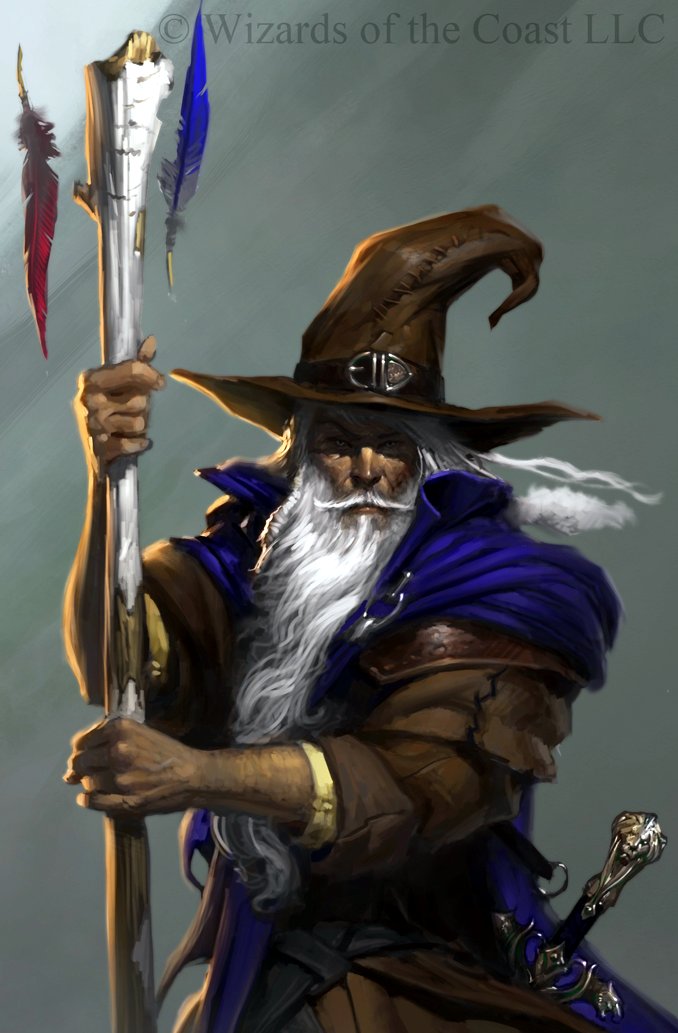
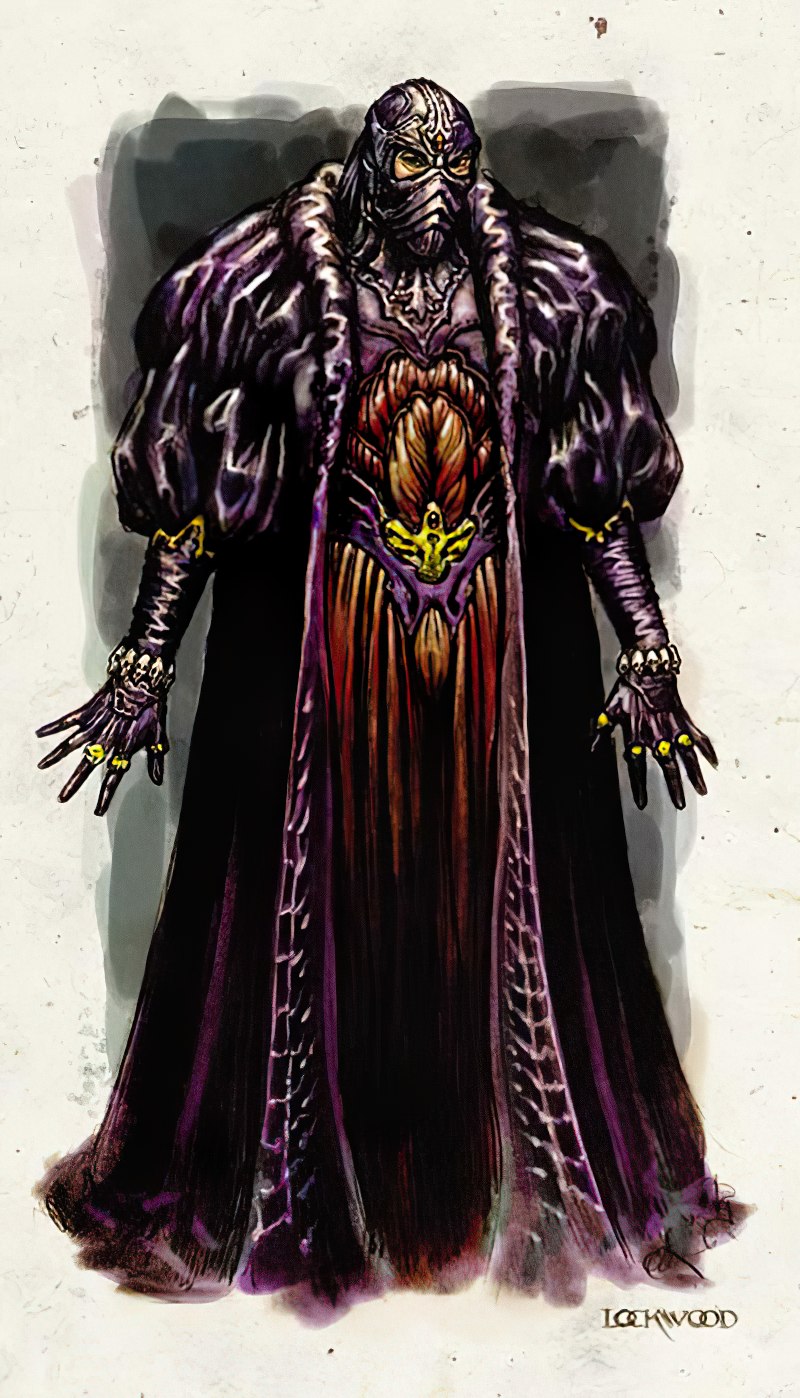
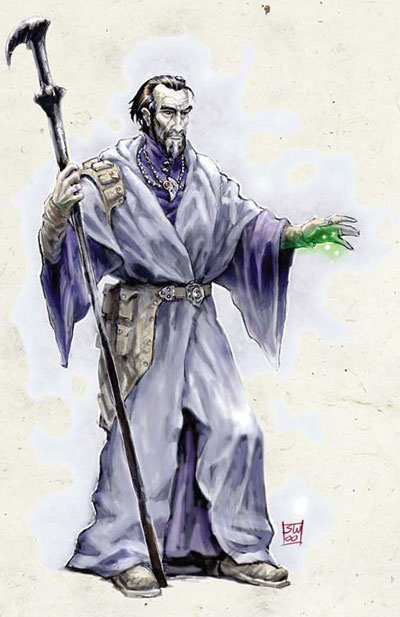
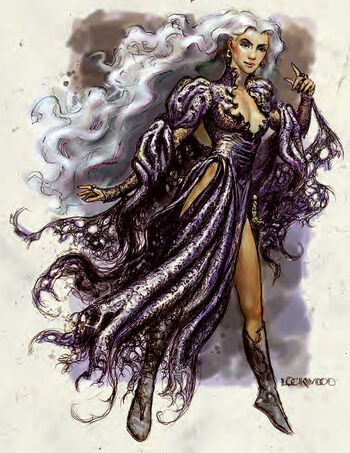
- None of the other Chosen of Mystra raise their head during the Longest Year, and hardly much after. It is believed the Harpers worked hard to hide them. The Harpers themselves were extremely weakened, but decades of subterfuge allowed them to ward off threats better than most, although the faction’s reliance on magic items and artifacts crippled them considerably. Storm Silverhand is believed to still lead the Harpers.
- Wizards and sorcerers lose much of their grandeur the world over. Some maintain high station through intelligence and charisma alone, some are able to cleverly leverage the weak magic they still possess. All are keenly aware they are more vulnerable without their former powers and the help of their artifacts.
- Paradoxically, although clerics were also deprived and weakened, their regard rose in some parts of Faerûn. That they were incapable of channeling grand miracles such as raising the dead did not seem to matter much to the common man. To the average citizen of Faerûn, the gods and their servants felt more close and intimate now. Proselytization by all faiths increased dramatically during and after the Longest Year, for it was thought only more followers could help return the strength of the Gods’ connection to their followers on the mortal plane. Paladins especially were seen in an even more hopeful light, as they had kept their virtue and principles even in the unsure times.
- The regard of magic changed universally, largely for the worse. Many distrusted any and all magic, whether divine or arcane, and some even saw its return as something to oppose, completely outlawing it, or limiting its use to those licensed by a local government. No matter the country or kingdom, magic was less understood and more unpredictable than ever, and subsequently more often than not simply feared. The common people know little of magic, and understand it only as a force to be reckoned with, with mysterious arcanists and divine servants behind great and unbelievable events. Those more worldly see it as yet another tool, but one to be checked no differently than the presence of armed men. These factors breed suspicion if not outright hostility in people towards any who practice magic in any form. While magic is not outlawed in many parts of the world, countless will find the practice of magic to be suspicious, and may readily assume dark arts or a more foul power at work.
Other Major Impacts
One of the few benefits of the Longest Year was that powerful magical creatures, namely Liches, had lost that which gave them unholy life and power. In their lairs, they collapsed to bones and trappings of grandeur. Their undead servants and armies returned to the corpses which hosted them. When the Longest Year ended, bones and flesh long-dead stirred again. Lethargic, weak, but endlessly hateful and malicious, liches and their like were biding their time in the dark holes of the world.
Portals to other planes close, disallowing the passing between worlds for both Good and Evil beings. Some of either sort had remained on the mortal plane, albeit reduced in power.
Creatures whose magical nature was intrinsic to their existence were rumoured to have survived, though equally many claimed the opposite, due to the disappearance of countless creatures in the wake of the Longest Year. The slow return of magic suggested that the state of these magical creatures, undead included, could return to what it once was in time - though none yet knew for certain.
Although the Twisted Rune lich cabal had collapsed during the Longest Year, Halaster Blackcloak was presumed dead deep in his Undermountain. Although the events of the Higharvestide could not occur without magic, the Undermountain itself wavered and had sections collapse. The city of Waterdeep felt the rumbles of it deep below, and all known entrances were sealed. With no containment, old and powerful things wandered the ruins of the Undermountain now.
The Underdark was plunged into a darkness and cold that not even the Drow had ever known. The check and balance of the Drow houses - of priestesses and magi - was wholly severed, and in many of the Underdark's recesses the formerly oppressed male dark elves pursued a violent climb to the top of power - where they failed, slave uprisings often succeeded instead. Many female Drow knew they could not contest with the new order of things, and fled to the surface, considering it the lesser risk to their deep caverns.
The Second Dragonspear War never occurs. The Way Inn and Daggerford remain safe, and accept their share of Theskian, Thayan, and Rashemi refugees from the East.
The twelfth Seros War does not occur, and Vorgrum the Mighty holds onto the Pirate Isles.
The following link also contains relevant material on TLY impact: https://www.dragonsneck.com/wiki/Companions-and-Summons
Effects Around Faerûn
The Church of Helm applied continuous pressure for missionary expeditions into Kara-Tur, secretly forming alliances with powerful merchants and influential nobles in an attempt to bring their plans to well-funded and supported fruition over the following few years. This led them to a man named Cordell, who boasted impressive expeditionary and militaristic feats with his mercenary company. Gifting him their sponsorship, they prompted him to request funding from the Council of Six to lead an expedition to the True World in the name of their cause. Given the wide-spanning chaos that The Longest Year has left in its wake, mundane trade routes had become even more crucial than ever, leaving the Council little choice but to agree to the outlandish proposal out of respect for their slowly draining coffers.
Along with Cordell’s mercenary group, the Church sent a group of especially fervent, unwavering, and loyal soldiers - a vanguard that could carry out tasks and complete objectives far beyond the ability of others - to join Cordell on his expedition to Kara-Tur. These crusaders, the Companions of the One True Vision, were tasked with spreading the religion to the continent, recording their encounters with the Kara-Turans, and cataloging both foreign treasures and untapped resources they came across during their journeys. Although the journey was arduous (and the losses at sea much greater than they may have normally been due to the lack of magic to aid them), during the winter of 1361 DR, the expedition ‘discovered’ Maztica.
The Companions of the One True Vision, incited by the zealous and fanatical words of faith from their superiors, and believing that they were delivering the will of Helm, became the driving force in a multitude of barbaric atrocities committed upon the natives of Maztica. Despite the discovery of Maztica forcing them to deviate from their original mission, they were determined to spread the influence of the Church to this new world. Unable to communicate with the majority of the natives of Maztica, they exterminated a significant number of them who either could not understand or would not comply with their ‘teachings’ in Helm’s name. These cruel and relentless acts would continue for several years as they remained in Maztica, keeping records of ‘vile, unjust, demon-like natives’ and ‘ritualistic worship of savage, destructive gods’.
In 1362 DR, the precarious balance in Maztica between the natives and invaders was irrevocably shaken as, following an assassination of the natives’ leader, Naltecona, in the Maztican capital of Nexal by Cordell’s traitorous lover and lieutenant, Darien, the native Nexalan warriors declared all-out war on the mercenary group who were currently stationed within the city. The two forces brutally clashed but, as if by fate, the gigantic volcano Mount Zatal erupted, spewing forth a torrent of molten rock and ash that lit up the night sky like a malevolent sunrise. As pyroclastic flows raced down the mountainside, rivers of lava snaked through the city streets, causing the city’s majestic pyramids to crumble, and the very ground beneath Nexal to sink, allowing the lakes that supported the city to swallow it whole. The cataclysmic result was the ancient city’s total devastation, leaving very few survivors on either side of the immense conflict.
The Church, upon hearing the news of this, framed the natural disaster as an absolute victory in the name of Helm and all the people of the Sword Coast over the native ‘devils’, declaring Helmsport as the capital of what they referred to as ‘New Amn’
Over the following years, between 1363 and 1369 DR, the Golden Legion and the Flaming Fist Mercenary Company established new colonies and forts in Maztica, amidst conflicts and tensions with local populations and among colonial powers. Trade disputes, failed explorations, and attacks from both local Maztican elves and sahuagin plagued the settlers.
Meanwhile, Waterdeep and Amn competed for trade supremacy, with suspicions of sabotage affecting maritime expeditions on both sides, culminating in the destruction of the recently constructed New Waterdeep by Kultakan invaders during a volatile power struggle in the region over its absurdly rich resources, which continues to the present day.
Mainland Amn - particularly Northern Amn - all along received regular shipments of Maztican spoils and riches in appeasement of the Council of Six, but not all made it through the newly Iron Fleet infested waters, and as time went on these voyages were forced to land farther South and continue on through land to evade the wrath of the monstrous fleets. With the rumour of the true actions of the Helmites in Maztica finally working its way back to the people of the Sword Coast, the Church of Helm sought to make amends by scapegoating the Order of the One True Vision. Although its members were not excommunicated, they were recalled from Maztica and their order was permanently disbanded, and Its former members were scattered across the Sword Coast performing reparations and missionary work in disgrace and relative obscurity.
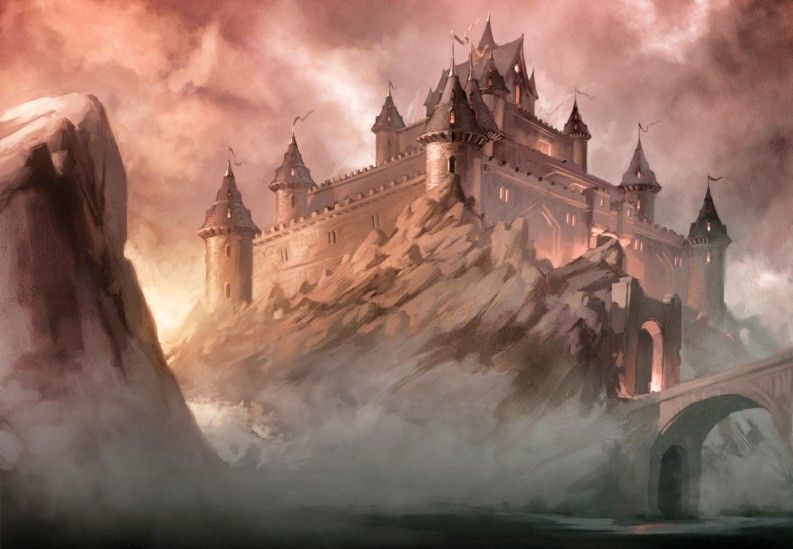
Candlekeep: The famous library-fortress withstood the Longest Year, and perhaps surprisingly to some, even thrived. The Sword Coast looked to Candlekeep for answers, and the longer magic's absence stretched on, the more people came in search of clarity, from lands both distant and near. Though countless visitors and aspirants proved fleeting and fickle, many nonetheless stayed behind with newfound purpose, dedicating themselves to the pursuit of truth and knowledge. This bolstered the numbers of Candlekeep significantly, bringing its importance to greater heights yet.
Over the next few years, not only would Candlekeep expand to keep up with its growing numbers and influence, but they also sent out hundreds of Avowed out into the world to further the research into the Longest Year. All the while thousands of books, scrolls, and various other texts of value were gifted to Candlekeep by the clueless and learned alike, in the hopes of hastening research and thus the return of magic. It was widely believed that the sages and scholars of the library-fortress were the world's best hope, despite their efforts yielding little results.
Faith in Candlekeep began to fade and dwindle in the face of lacking results, until in 1363 DR, an apprentice of Candlekeep proved to be the first to cast a spell - a cantrip - in years. Word of this spread like wildfire, and soon enough the smallest signs of magic pervaded all of Faerûn, spurring on a time of hope for some, and a time of despair for others. Some saw the First Spellcasting as proof of Candlekeep having discovered a solution, and countless people regarded it as a sign of progress. Droves of people began making pilgrimages to the library-fortress, deeming it a sacred site. This would continue for several years to come.
In 1365 DR, Alturiak, Candlekeep announced the Thirteenth Conclave of the year. The attendance was the highest yet, full of prominent emissaries and dignitaries, all hoping for the best of news. Much to their chagrin, Candlekeep speculated that the Weave would not be returning to what it once was, and subsequently encouraged the heads of countries and kingdoms to treat magic with appropriate caution and pre-emptive measures to combat rumoured mishaps and differences in functions of magic. The message of Candlekeep was misinterpreted by some of the attending parties, a skewed view that - in spite of Candlekeep's efforts to the contrary - would set in motion increasingly harsher laws and perception of magic across the continent, hope replaced by wariness or even outright paranoia in most lands.
Candlekeep continues its diligent efforts, and though there have been fewer and fewer Conclaves ever since, some still hold out hope for the solution that never came, assured that the library-fortress and its sages will be their salvation.

Due to their failure in the Battle of Goliad, Damara came under the power of the Kingdom of Vaasa. The Northern provinces of Damara were deserted and the refugees fled to the South of the kingdom. During this time, the Kingdom of Damara was non-existent, as it became a land for a few dukes and barons independent from each other. These independent leaders were forced to pay tribute to Vaasa and acknowledge the power of their Northern neighbour.
However, in 1359 DR, Gareth Dragonsbane was victorious over the Witch-King and successfully united Damara, earning the crown of the kingdom. The Longest Year's shadow fell over the Cold Lands thereafter.
Though this proved a strenuous period for Damara - having to rebuild the kingdom and its army in the face of a changed world - Damara was nonetheless steeped in stalwart faith and unshaking hope for the future. They had, after all, stood against the Witch-King on their lonesome and persevered despite neighbouring Impiltur and Narfell's refusal to aid them on the grounds that they had their own problems to deal with. Many of the people held them in contempt for this, but in time King Gareth's public appeal to the masses - of forgiveness and unity - alongside internal efforts saw grudges dissipate, though tensions remained strong between Damara and Vaasa.
The forming of the Compact of the Triad followed, a coaliation of both necessity and hope between Damara and Impiltur, in which the Forgotten Kingdom would pay reparations for their inaction, hastening Damara's recovery. Though Damarans were initially apprehensive of the Compact and some even voiced vehement opposition, surprisingly many in the end embraced the union with open arms - whether out of pragmatism, fear or benevolence.
Forming a stalwart barrier against the Tuigan Horde in the North Eastern reaches of the world, the Compact has nevertheless been limited in its offense, unable to completely push back the Tuigan. The war against the invaders has now shifted to the Northern and Eastern borders of Narfell and Northern Rashemen, the Horde neither retreating, nor gaining more ground for the moment, as the Compact and its allies keep the Tuigan at bay in what is essentially a stalemate. The support of distant lands has ceased altogether, many kingdoms and countries believing the Compact to have the North East's protection well in hand.
Over the decade of King Gareth's reign, the fortunes of Damara have seen their peak, and the worship of the Triad - already prominent in the region - has become the domineering faith. Despite the ongoing war effort in the North East, the last of stragglers of Zhengyi's forces are slain, ensuring peace within Damara's own borders. All the while a great many rumours brew of Damara preparing to annex Vaasa, though equally many dismiss such claims as inane babble due to the implied logistics of annexation in the midst of war.
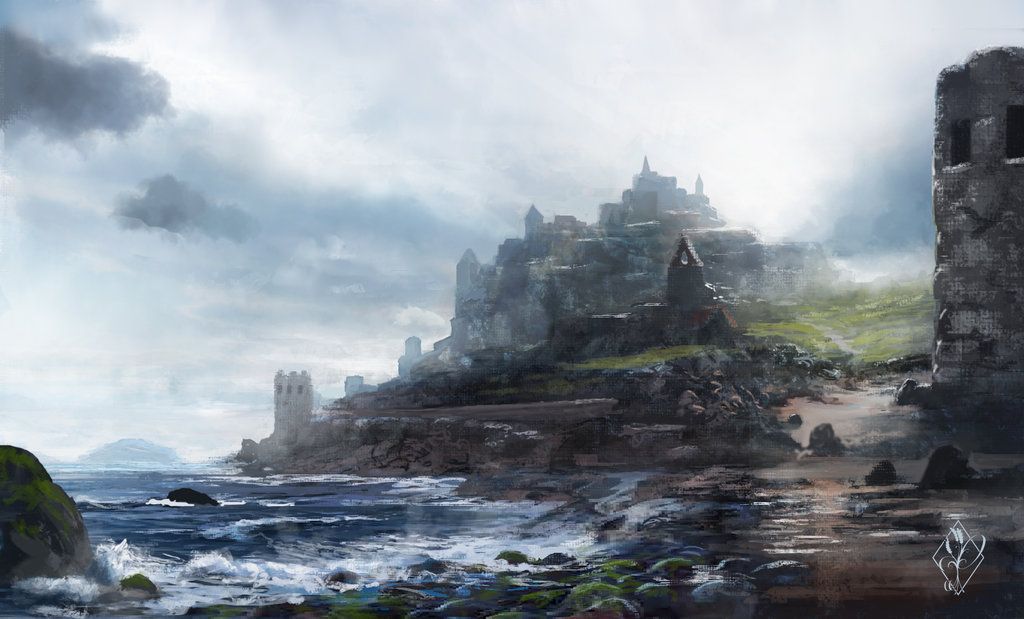
Much of this would change with the coming of the Longest Year. The Tuigan Horde, bolstered by the inadvertent momentum the Sellsword Age blessed them with, posed a greater threat than the era of upheaval itself. The national sense of altruism and selflessness inherent in Impiltur's people compelled the Lords of Imphras II to act - not only for themselves, but also for the kingdom's immediate neighbours.
With a common foe on the horizon and past mistakes to atone for, namely the abandonment of the Cold Lands in their war against the Witch-King, Impiltur formed an unexpected alliance with Damara, in which the Forgotten Kingdom would pay reparations for their inaction, hastening Damara's recovery. It became known as the Compact of the Triad, and though Impilturans looked favourably upon the union, it was speculated among some circles that Damara was less happy with it. Fears of old grudges fracturing the Compact were vocal, yet no such fracturing ever came to be.
Forming a stalwart barrier against the Tuigan Horde in the North Eastern reaches of the world, the Compact has nevertheless been limited in its offense, unable to completely push back the Tuigan. The war against the invaders has now shifted to the Northern and Eastern borders of Narfell and Northern Rashemen, the Horde neither retreating, nor gaining more ground for the moment, as the Compact and its allies keep the Tuigan at bay in what is essentially a stalemate. The support of distant lands has ceased altogether, many kingdoms and countries believing the Compact to have the North East's protection well in hand.
Within the realm of Impiltur itself, the Earthspur and Earthfast Mountains have known a period of eerie peace. The Hobgoblin Menace - as natives are wont to call the goblinoid plaguing their land - appear to have withdrawn into the darkest and deepest of tunnels, scarcely showing themselves even in the tallest peaks of the mountains. Though the Warswords retain watchful vigil over the Forgotten Kingdom, few in the realm seem concerned of the sudden disappearance of their ancient enemy.
On the whole Impiltur has regained much of its former importance among the lands of the East, and the worship of the Triad had steadily spread to the Cold Lands and further yet in the wake of the Longest Year, and continues to do so. A prosperous and wealthy kingdom, with a strong ally by its side, the future looks bright for the defenders of the North East, some of its neighbours even seeking to become part of the Compact.

All the illusion magic that shielded Evermeet is completely gone and has resulted in sahuagin incursions along the coasts, which continue to this day. They've also attacked the Evermeet fleet far more brazenly and consistently since. There's general wariness that the Iron Fleet may set their sights upon Evermeet now that any and all can find it, and their blockades and general presence on the Sea of Swords has prevented easy access to the closest elven realm, the Wealdath, and Northern Faerun.
The elves largely used magic for both communication and travel, and since its disappearance, they've had to adapt and start sending emissaries and couriers to the mainland, always skirting around the dangers of the Iron Fleet by sailing southwards, often to the shores of Calimshan, to be able to contact the Wealdath, Evereska, etc.
Generally there’s a want and call for unification of the People more than ever now, though the powers that be in Evermeet don’t always agree with one another on how that ought be done. Many still want the other elven realms to ‘return to the fold’ and become one with Evermeet by leaving behind their realms on the mainland, and others preach that maintaining close contact and outposts, embassies, is more vital than ever. Both camps travel to the mainland in the hopes of furthering their respective goals, in the name of the People.
The nearby sea elves have become even more reclusive and rarer to sight, which is attributed to the sahuagin menace, but some still visit Evermeet for the sake of trade and maintained contact with their cousins.
The divine stone, wood, and magical construction in general that elves rely on and that Evermeet was built on started to deteriorate and weaken slowly, and still are in spite of magic's return. It was initially presumed magic hasn't returned fully enough. Evermeet has adapted by reinforcing existing structures through mundane means, resulting in frequent trade with the Southern human realms, though many sun elves wish to wean off of this human reliance and establish elven sources in the mainland.
The maintainers and creators of Evermeet are known as The Architects, Evermeet’s equivalents of Treesingers, that dedicate their lives to mastering an art known as The Shaping - mixing the arcane and divine - in magical creation and blending of stone, crystal, and much more, out of which most of the island’s civilisation is made.
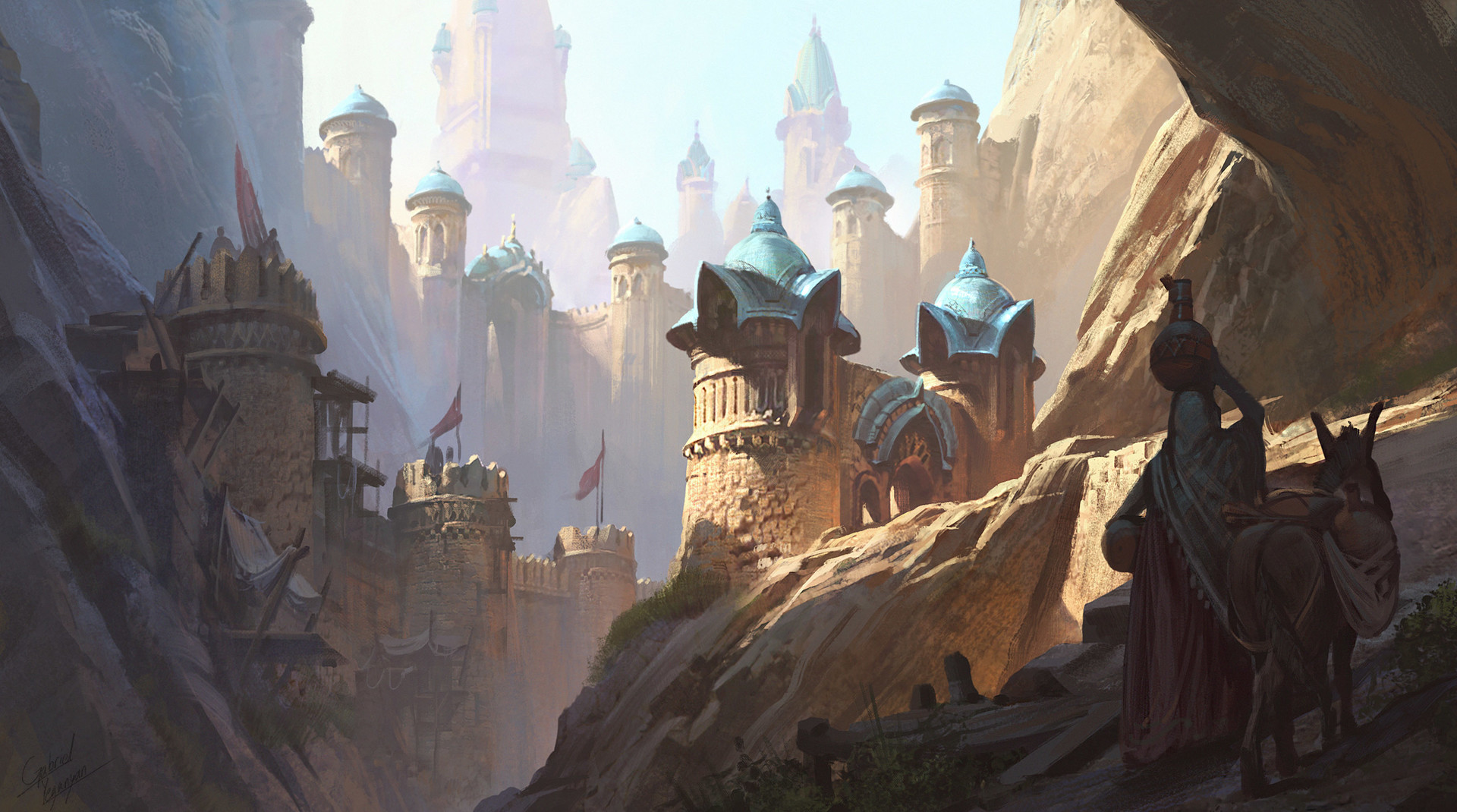
The Tuigan Horde was nearly unstoppable. Not relying on magic so much as numbers and martial prowess and tactics, they overran the Northern tharchions of Thay and continued into Southern Rashemen, as both the Red Wizards of Thay, their people, and the Witches of Rashemen were too weak to fully stop them.
By 1363 DR, Aglarond shored up its Eastern defenses at the Watchwall in anticipation of the worst, and Thesk received aid from the Compact of the Triad (Damara & Impiltur) and more distantly Tethyr, Amn, and Cormyr, to repel the Tuigan Horde. Refugees of the Horde filled not just Damara, Impiltur and Cormyr, but further lands. The Horde soon retreated from Rashemen, then Thesk and Thay, instead focusing on the armies of the Compact that evidently posed the greatest of threats in the region.
Now the war front has shifted to the Northern and Eastern borders of Narfell and Northern Rashemen, the Horde neither retreating, nor gaining more ground, as the Compact and its allies keep the Tuigan at bay in what is essentially a stalemate. Meanwhile the support of distant lands has ceased altogether, many kingdoms and countries believing the Compact to have the North East's protection well in hand.
The people's tenuous pact with the Red Wizards has since fallen into disarray, many of the magi having been hunted down and hung from the ramparts of their erstwhile keeps and fortresses - no mercy or forgiveness to be found among the liberated masses. Bloodshed borne of revenge and justice has driven many of the freed people to flee for calmer lands, while some simply attempt to distance themselves from their arduous pasts. The land of Thay, as of 1367 DR, is under the rule of a unified slave populace, led by Oronkhor the Unforgiving, a former slave among many who orchestrated many of the killings of Red Wizards and their most loyal of servants. The remnants of the magi have supposedly scattered and now reportedly operate independently in small cells or cabals with no unified base.
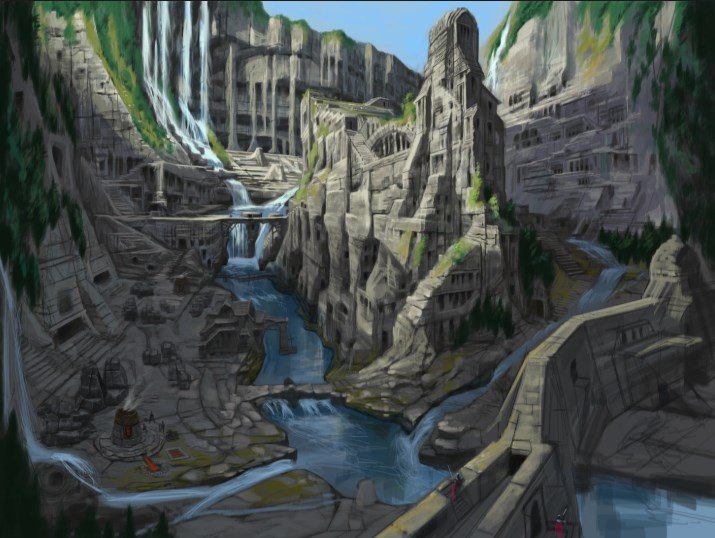
Intent upon the destruction of the Red Wizards now that the world had changed. he decreed the land's Southern borders and berserker lodges reinforced in both numbers and fortifications. Some among the Rashemaar believed only the annihilation of their hated foe would restore the spirits of the land as well as the natural order of the known world, casting all blame upon Thayans, assured of their guilt.
Such precaution - whether borne of false beliefs or not - proved a tremendous boon when the Tuigan Horde began their abrupt invasion of the East in 1359 DR. Though an invasion of Thay was out of the question, it was clear to all that Rashemen would have surely fallen without the Iron Lord's apparent prudence, yet despite the valiant efforts of the berserker armies, Citadel Rashemar fell to the might of the horselords, followed by much of Southern Rashemen succumbing to overwhelming force.
The Iron Lord and his armies nonetheless managed to ward off the Tuigan Horde long enough to ensure their people's survival, as the Tuigan were forced into a retreat that saw their vast armies relocate from Rashemen, Thesk, and Thay, to the North Country; the Eastern borders of Narfell as well as Northern Rashemen, where they would remain for the unforeseeable future.
Ever since the Rashemaar have felt a change of heart in regards to the cause of the Longest Year, and though The Great Silence appears to be over, the Rashemaar have embarked upon many a pilgrimage to foreign lands in search of answers to the Weave's dearth, firmly believing that only due diligence will ensure the continued presence of both magic and the land's spirits. Pairings of Wychlaran and berserkers become a more common sight than ever all across Western Faerûn, sparking curiosity and wariness alike among foreigners, though little proves to deter these seekers of truth.
Meanwhile in Rashemen, skirmishes along its Northern borders grow scarcer and scarcer with the Tuigan Horde's focus lying almost wholly upon the Compact of the Triad (Damara & Impiltur), and few Rashemaar believe the Tuigan to be a true danger now that magic trickles back into the world. Yet with it comes tensions also, between the Wychlaran and the Iron Lord, many of the witches and supposedly even some of the berserkers wishing to return to the old ways...

In 1363 DR, a segment of the Iron Fleet raided the coasts of Alaron, the Korinn Archipelago and some of the Norheim Isles. While the Ffolk were content to simply repel the invaders, the enraged Northlanders took to their longships after chasing the Fleet back out to sea in the name of revenge and glory. This led to them targetting a great galleon captained by the lizardman warlord Zass'thirr. Though the Northlanders themselves sustained many casualties, they emerged victorious in the great sea battle and dealt a devastating blow to the Iron Fleet without even fully realising. Claiming the warlord's head, they returned home as conquerors, and the galleon was left in ruins.
Ever since the Moonshae Isles have known relative peace. The conflict between the Ffolk and Northlanders has been steadily waning in the face of a mutual threat, and though raiding and skirmishing still occurs to some extent, High King Tristan Kendrick has been hard at work in unifying the isles. Some hopefully claim that he will surely succeed in the years to come, yet feuds of old seldom relinquish their hold...
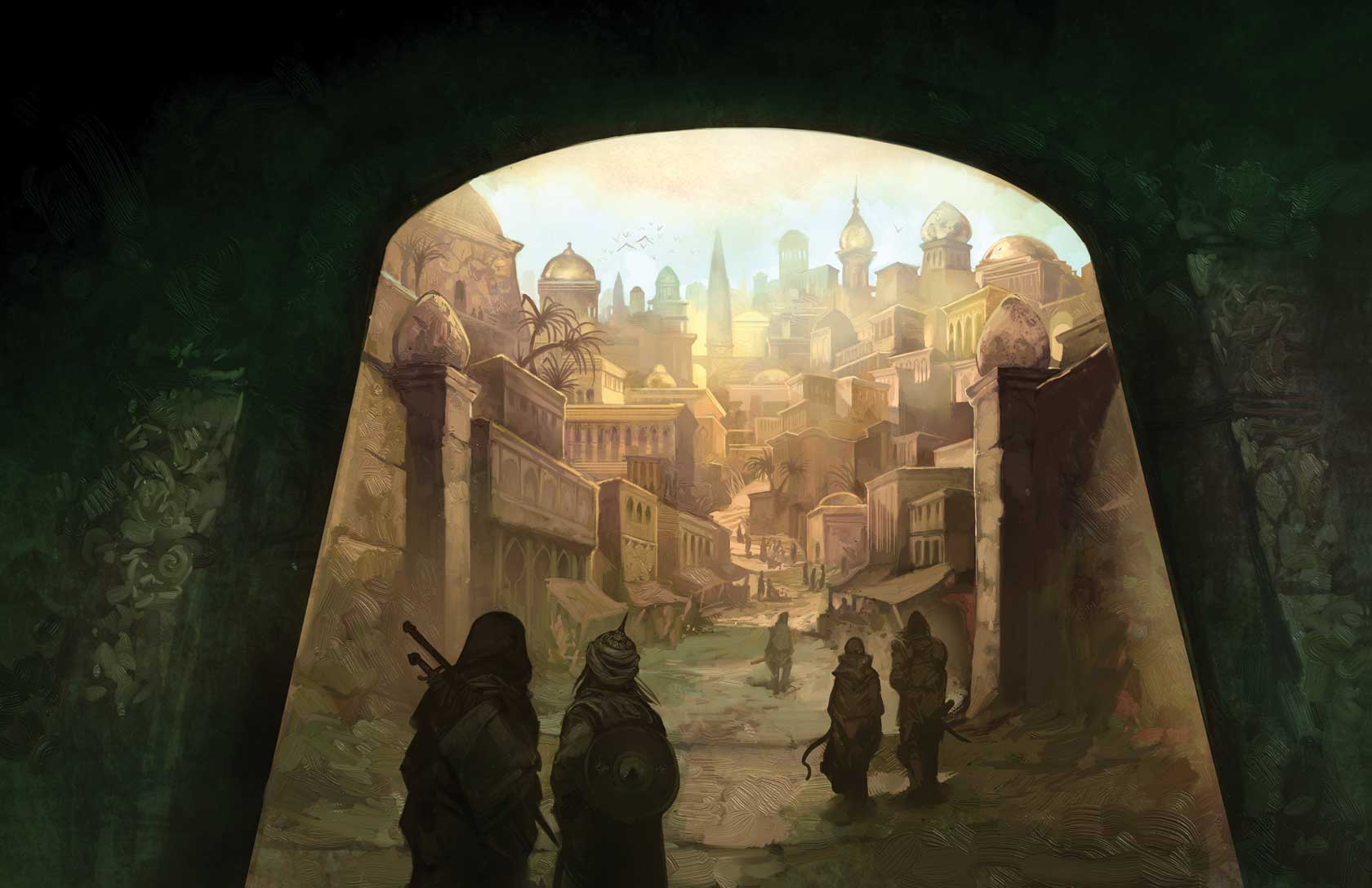
Calimshan:
Despite many challenges related to its underworld and tradition of slavery, and some political upheaval, Calimshan has managed to stay mainly stable, especially since the return of minor magic, and besides the one obvious exception of having lost a city, Almraiven, to a slave revolt.
Just like in Amn, the Shadow Thieves have come to an end in Calimshan as a result of the Time of Troubles and the following Dark Stalker Wars. Calimshan’s underworld was upended, and as a result, Ralan el Pesarkhal was able to rise to power and overthrow the Djenispool dynasty, exerting almost complete control over both the government and the criminal underworld of Calimshan. Through this day, he brings growth, prosperity, and strong national defense to Calimshan. As Tethyr stabilized in 1369, trade on the Trade Way has grown in the last six moons with both neighboring nations working on their relations slowly, but peacefully.
Unlike Thay, Calimshan fared much better at controlling and maintaining their slave populations through the Longest Year. Despite being outnumbered in most places, slave owners were able to use propaganda to keep the slaves divided just enough to avoid uniting. There were revolts here and there, the largest being in Almraiven in 1360. Little is known about what occurred there, but the revolt happened after the sinking of the Pasha’s Palace and the arrest of the city’s leadership, including its high vizier. In the chaos that followed, the slaves, with the help of some of those arrested, seized control of the city and its naval ships. The city has successfully remained independent since, though it suffers from its lonesome and unique position, forced to make hard choices that go against its goals as a bastion of the oppressed. Many of the former slaves struggle to adapt to a new way of life, countless still shackled in a mental prison of their erstwhile masters' making.
As for the state of magic in Calimshan, the Longest Year has meant change for the desert as well as the everyday lives of people, given the high amounts of magical gadgets in use in Calimshan. However, as a result, these objects and the Calimshites were some of the first to benefit from the return of magic. Meanwhile, the Calim Desert has become eerily quiet. The rumbles and winds that usually torment the sands have ceased, making repair and upkeep of the Trade Way through the desert one of the most important projects for Calimshan. More of the stone road is uncovered now than has been since the Shoon Imperium and despite the loss of magic protecting the road from dangers and increased banditry, the Trade Way is as safe and easy to travel on as it’s ever been.
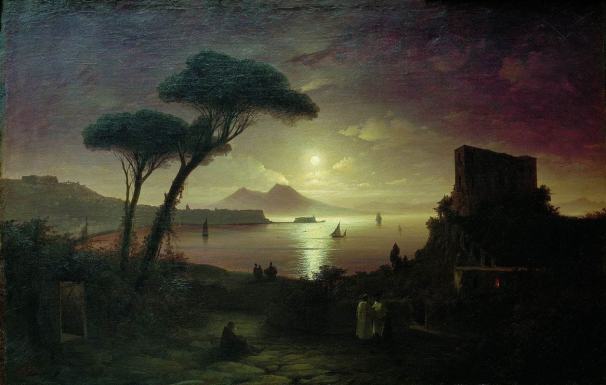
The Moonsea: As the months of the Longest Year stretched on, the first major upheaval to happen was the coup in Hillsfar. With its powerful and xenophobic wizard-ruler rendered helpless, Zhentarim agents quickly moved in to coax the mercenary Red Plumes that served him.
The Black Network used both threat and bribery to sway the Red Plumes, who eventually were coerced into slaying their former employer, giving the city over to the Zhentarim. Soon after, the company mysteriously lost many of its key members, and those that remained naturally splintered into various smaller groups to spread about Faerûn.
As this was happening, another betrayal took place; Manshoon, ruler of Zhentil Keep, was slain by Fzoul Chembryl in 1362 DR, who in turn assumed control of the fortress city. Few challenged this, for many saw this as the will of Bane. Thereafter, the Zhentarim army marched upon Phlan, which was promptly overran and occupied, and the Pool of Radiance there was discovered to be no longer anything but plain still water.
Now, the Moonsea cowers under the shadow of Zhentil Keep more than ever. Only Melvaunt and Thentia remain in defiance, but there is an ever-present and palpable sense of dread from their peoples - fearing what may come...
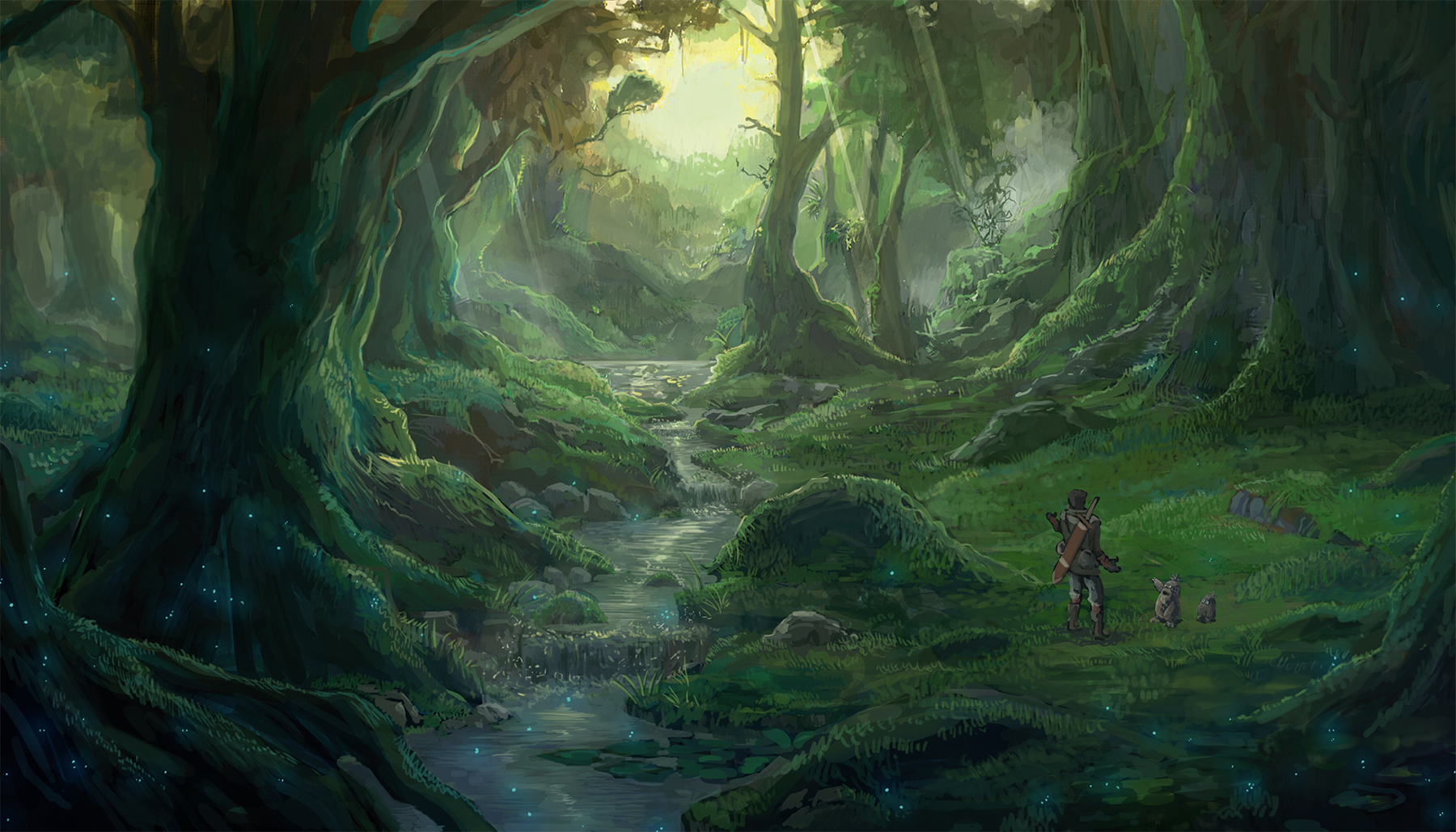
The Dalelands: Considering the Dalelands were located at a crossroads between a number of different powerful human nations and city-states, the fact their lands had always been brought to the attention of a several of the Realms' most influential powers came as little surprise.
Yet with the onset of the Longest Year, the attention of would-be conquerors and meddlers waned until none looked to the Dales with nefarious intent, far too occupied with their own troubles, or with their eyes set upon greater prey.
Unlike most, the Dales prospered on all fronts in spite of magic's absence. Trade had always been an important, and often unifying, force among the various dales, and this became doubly true with most of the Dalelands' neighbours proving unable or unwilling to trade. The towns grew increasingly dependent on one another, and though some old grudges and rivalries yet endured, they were set aside for the time being.
What was once strictly a loose confederation of small towns swiftly neared the point of unifying as a kingdom of one. Talks of unity spread significantly, with earnest support from most in the hopes of keeping out the dangers of all that the Longest Year had wrought outside of the Dalelands. Yet before anything could come of such prosperous times and hopeful talk, the Dales were abruptly thrown into the clutches of chaos in mid 1368 DR.
Scardale, Featherdale, Tasseldale, Deepingdale and Archendale all fell in quick succession one after the other, succumbing to drow invaders that had seemingly sprung up out of nowhere under the cover of night. The brutal invasion became known locally as The Night of Black Knives. Rumours initially marked the offensive as a Zhentarim invasion, but survivors that flooded into the Northern parts of the Dales swiftly disproved this. By the time adequate defenses were mounted, half of the Dalelands had already been conquered.
Rivers Ashaba and Duathamper have become the Dales' warfronts, the forces of Battledale, Mistledale, Daggerdale, Harrowdale and Shadowdale on the Northern side, and the drow on the Southern one. High Dale remains distant and uncaring, assured in the protection of Cormyr. Hearsay has it that the Land of the Purple Dragon - now freed from the Tuigan warfront - looks upon the Dales' plight, intent on aiding them. Supposed sightings of Cormyrian armies heading toward the Thunder Peaks spread in the region, in a message of hope, though not all put stock in such claims in the absence of official word from Cormyr. All the while the Northern Dales have been joined by the elves of Cormanthor, in concert with Dalelands heroes and armies warding off the bulk of the drow... for now.
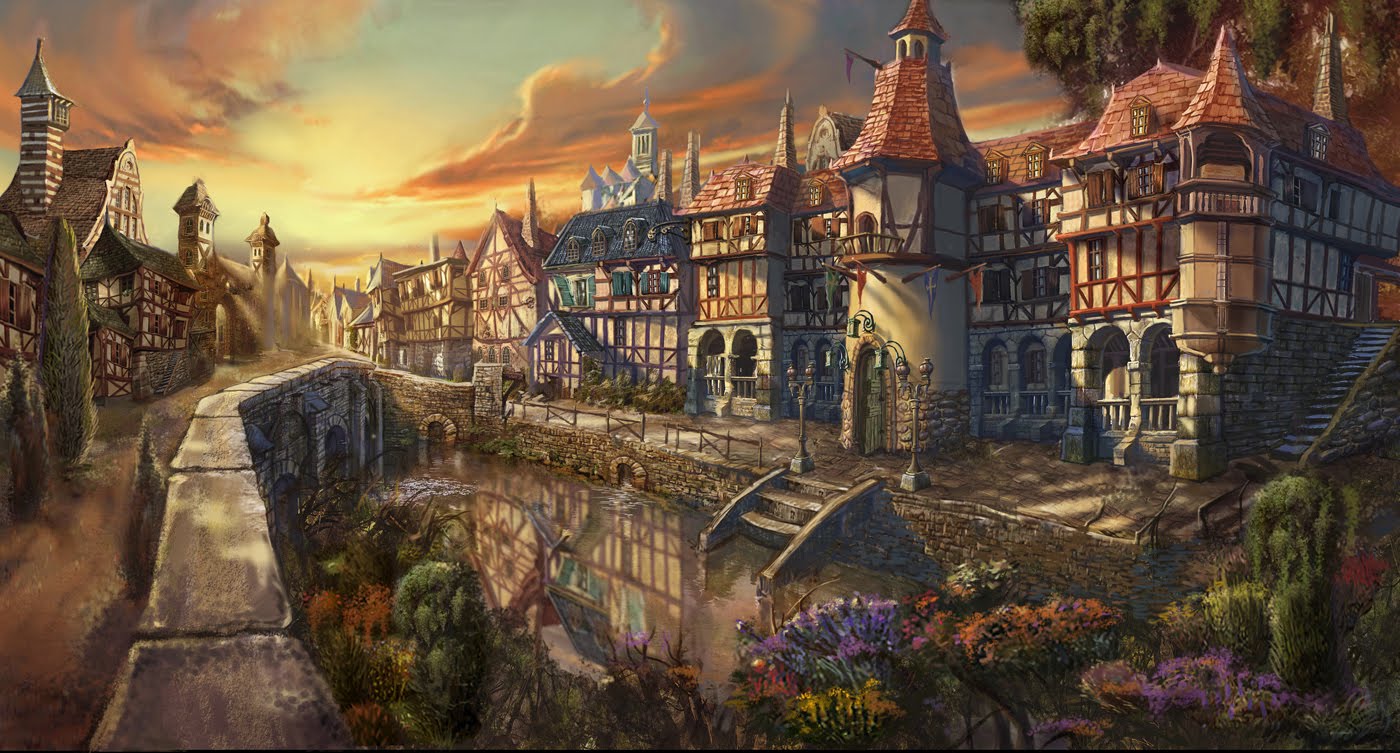
Cormyr: Unlike many other regions of Faerûn during the Longest Year, the bustling and prosperous Land of the Purple Dragon has only strengthened and grown while under the rule of King Azoun IV. Like other regions, there were some difficulties, but they have been overshadowed by an increase in martial might, massive population growth, and acclaim for the King’s involvement in fighting back the Tuigan Horde in 1360 DR.
The sudden loss of magic did cripple the War Wizards, which led to tensions between families, city lords, and the Crown, as those who relied on their protection became paranoid. However, aggression was avoided thanks in part to the Crown’s efforts to boost and prompt the Purple Dragons as a martial organization above all, proving once more the Crown’s ability to keep the country stable and prosperous, even through a time which has been disastrous to many neighbours. This is a large part of the population increase, as trade, labour, and immigration from all over North Faerûn flocks to Cormyr as a place where one can build a more normal life. Small hamlets and villages are growing into towns, and the cities are busier than ever before. For now, the population increase has been sustainable, besides some conflicts between new and old Cormytes.
As Cormyr thrives, the War Wizards are hard at work studying the loss and subsequent return of magic, the effects of the Longest Year, and the danger of returning magic. Most in Cormyr, having seen magic as a central part of its society, are welcoming of its return, but there are rules in place to control its usage.
Other ongoing and significant events include the rise in Tymora’s faith, Cormyr’s support of Halath Tymmyr in Sembia to encourage unification and regional economic stability, and an ongoing, yet tense, alliance with the Zhentil Keep which has allowed Cormyr to keep the Zhents out of the Dalelands, and to provide aid against the drow invasion using Tilverton as an assembly point.
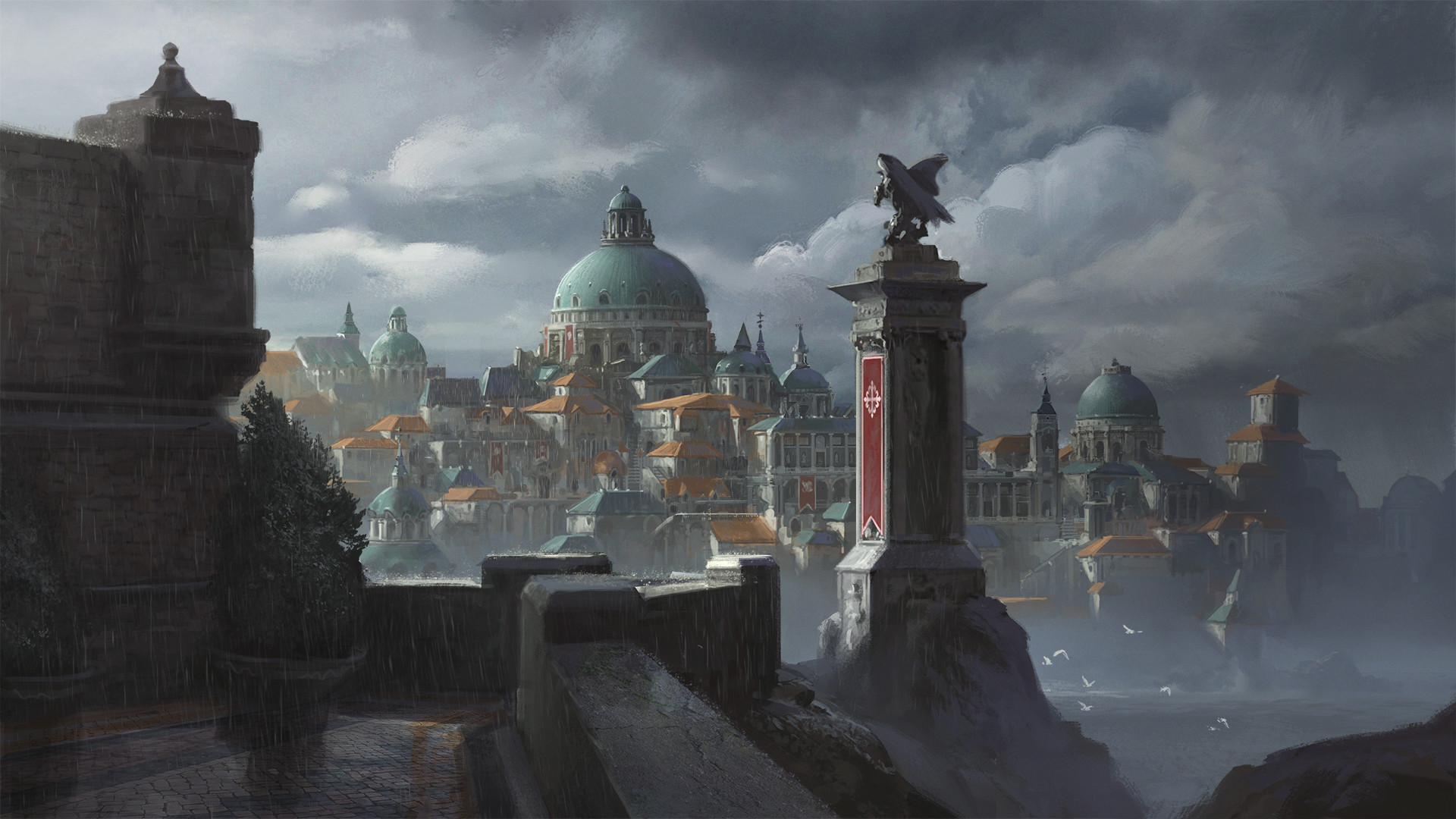
Sembia: As soon as the Longest Year struck, Sembia fell into disarray, with its Overmaster Elduth Yarmmaster found mysteriously dead in his chambers the very first day. His death was followed by an immediate power vacuum, one that the members of the Merchant Council and outsiders alike sought to fill.
The decade long civil war that followed became known as The War of Crimson Coin, deriving from the sheer carnage and suffering wrought in the name of wealth and power, as well as the many sellswords involved in it. Countless of the local commoners would take up the sword, some simply striving to make ends meet, finding no other recourse in the midst of war, whilst others latched onto romantic tales of the sellsword life ensuring glory and wealth, spurred on by the increased might of the martial way of life in the wake of the Longest Year.
At first only natives took part in the bloody conflict, but over the years to come foreign mercenary bands and other groups inserted themselves into the battle for power, each hoping to seize the upperhand - whether for themselves or whoever they represented. Though various groups - both foreign and domestic - seized control of sizable cities and patches of land overall, few held onto any of it for long, until in recent memory, 1369 DR.
Now, most of the Merchant Council lay dead, and the few remaining survivors scramble to survive, holding desperately onto their cities - with the sole exception of one Halath Tymmyr, the self-proclaimed Overmaster of West Sembia, who has been steadily consolidating power since the beginning of the civil war, now controlling all the land from the Western border to Selgaunt. Everything North of River Arkhen remains contested, largely regarded as No Man's Land, yet many believe Halath Tymmyr will soon take control of all Sembia, and few natives oppose such notions in the hopes of a better tomorrow, of an end to bloodshed and perpetual conflict.

Chessenta: The Time of Troubles was tumultuous for Chessenta. It began with a war between the cities, and ended in an uneasy alliance against Unther. The rise and subsequent fall of Tchazzar and the defeat of King Hippartes of Akanax left the war-torn cities of Chesssenta independent upon the sudden arrival of the Longest Year.
The Longest Year brought on another series of violent wars, ending in unification and the rule of Over-Queen Idrane, who led Chessenta out of war and into peace and relative prosperity, from 1363 to the present.
The wars during The Longest Year began because House Karanok, leaders of Luthcheq, and notorious mage-killers were suddenly “god-less” with the onset of the Longest Year and the loss of Entropy. Without the fear of their power, the crazed family was disposed of by assassins from Mordulkin. The war-like city of Akanax pounced on the weakness in Luthcheq. This devolved the already battered region into another war, with Akanax, Cimbar and Mordulkin on one side, Luthcheq and Soorenar on the other, and Airspur not joining. In less than a year, the aggressor, Akanax led their side to victory, however, the death of King Gormantor of Akanax left the alliance led by Sceptanar Idriane of Cimbar who was declared a war hero and took the title of Over-Queen of Cessenta.
As a result of Idriane’s leadership; philosophy, art, astronomy, and athletics surged through the region - though Akanax generally remained a very militant city and the backbone of the nation’s defense. Trade and populations bloomed across Chessenta and the beautiful and clean cities brought travelers from across the realm. Slavery still continues, with most of the slaves being elves, however their numbers remain fewer than other nearby nations and eventual freedom is not uncommon. Despite the deaths of the Karanoks and the widespread population of mages in some cities, casting magic was still treated uneasily in many places due to its now uncertain nature. One exception was Soorenar, where mages tend to get away with far more without persecution.
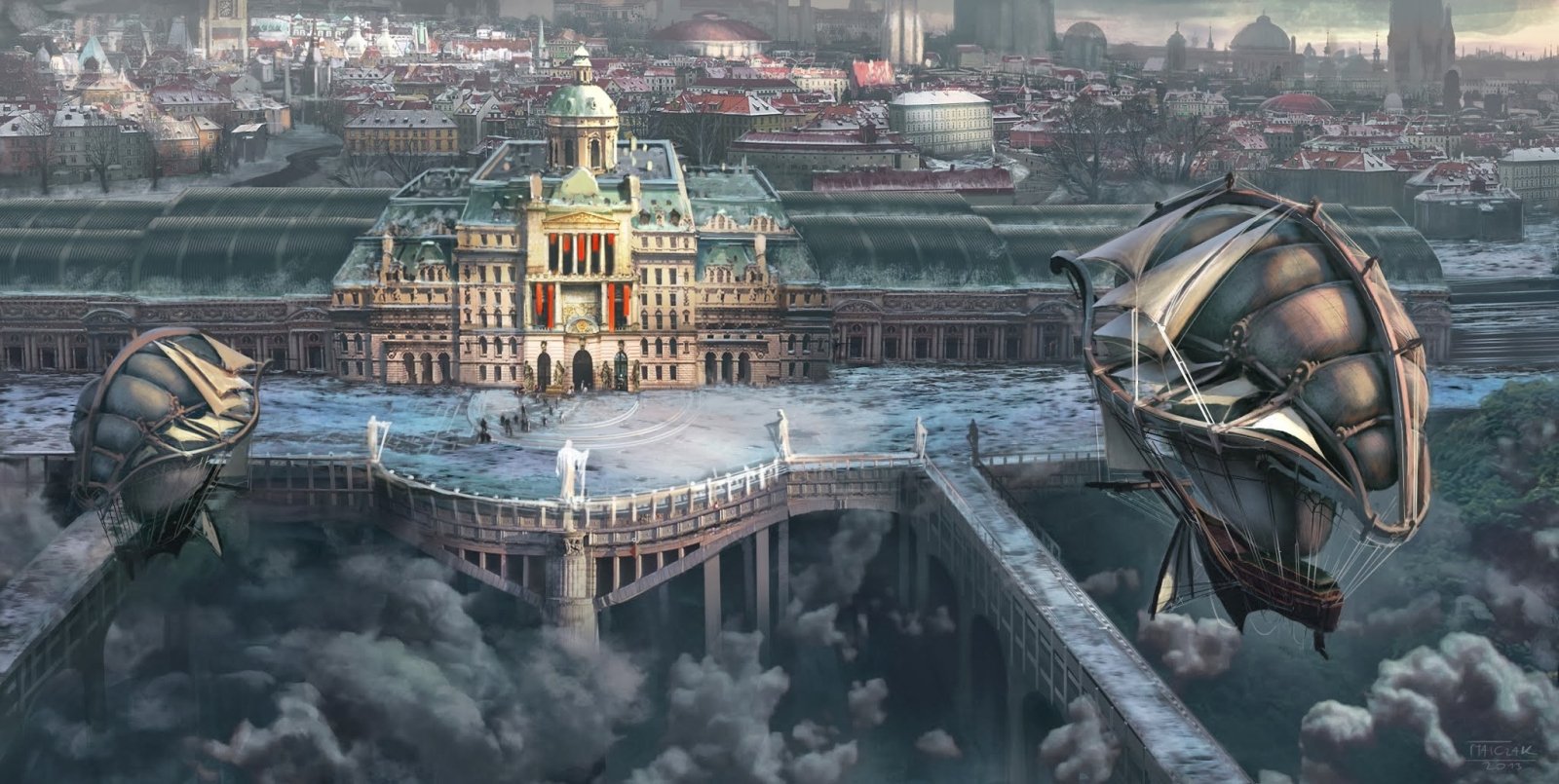

Alustriel Silverhand, Lady of Silverymoon, vanished from her own tower. No one was able to say what happened or how, but the fact that the tower was vulnerable without magic surprised few in the end. The worst was feared, as Silverymoon fell into deep issues with its succession and ability to sustain itself without magic. While Silverymoon was weakened, the orc clans teemed and grew ambitious, leading to the rise of the Second Black Horde in 1366 DR.
Much of the Confederation's might has been consigned to fighting off the orc threat, which has enlisted goblinoid clans and even some of the Trollbark trolls to pressure from the South. There seems to be no end to the war in sight yet, and everything points to the Lords' Alliance taking less and less precedence, to the point of many in the North supporting abandonment of the coalition.
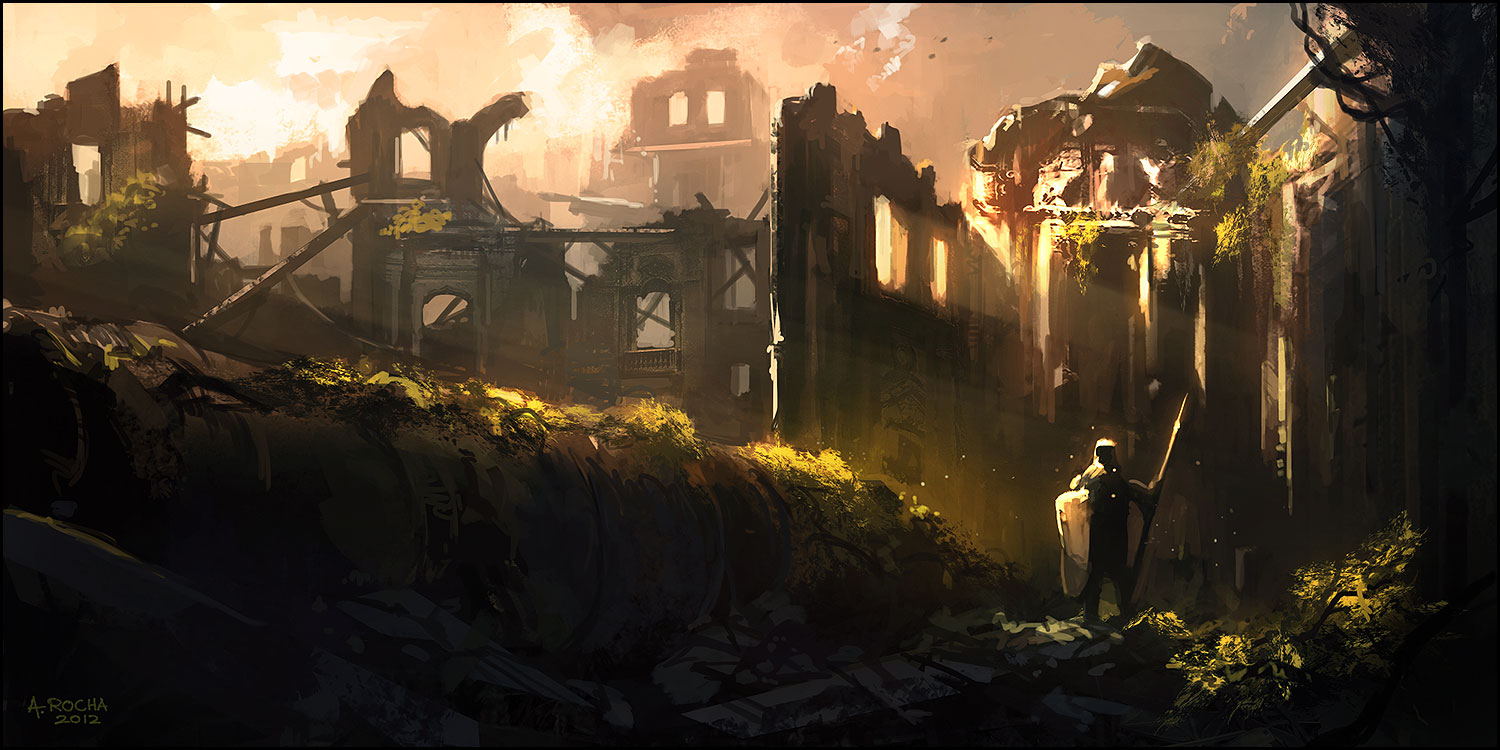
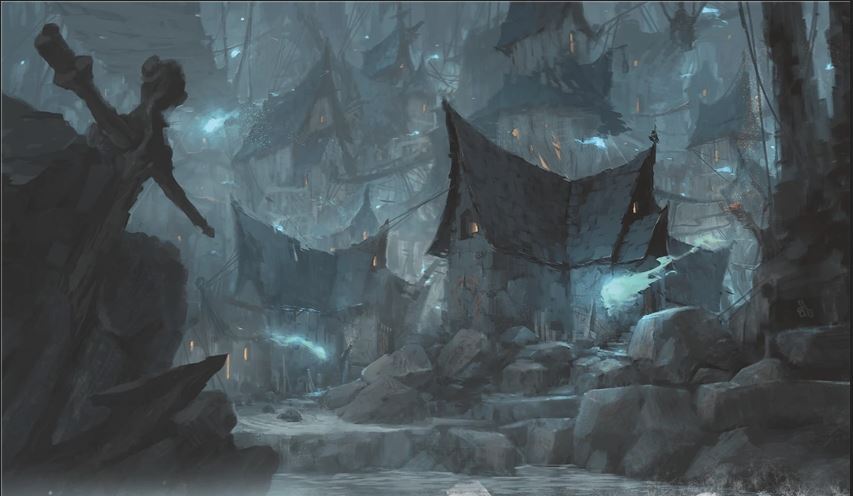
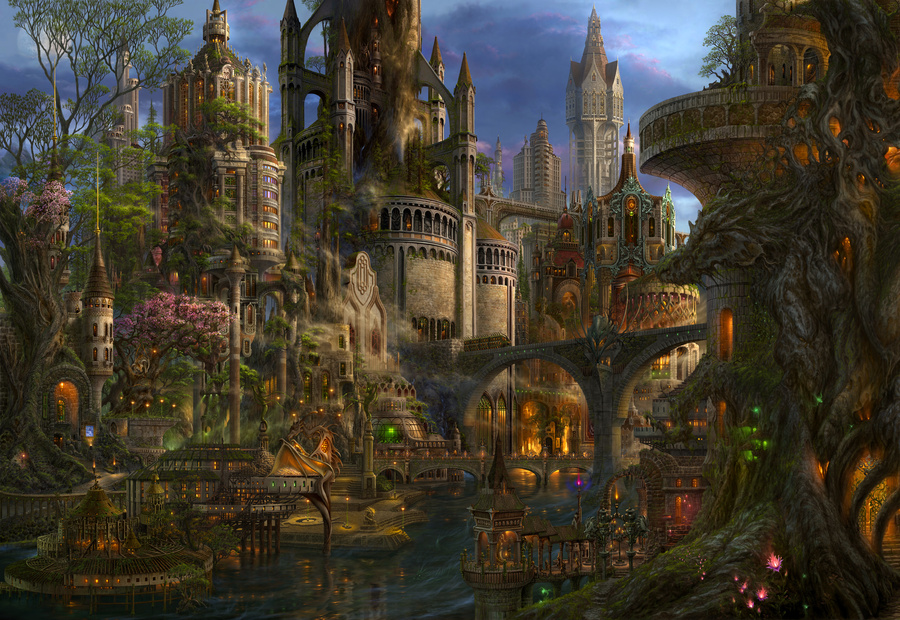

No major shifts of power occurred in the city during the Longest Year or since, though occasional earthquakes below the city as well as internal strife caused fleeting unrest in 1356 of Alturiak due to indecision and uncertainty around Candlekeep's request to begin heavy controlling on magic across the lands. Waterdeep adapted a similar stance to that of most cities, but not to the extent and zeal of Amn or Neverwinter.
Now, the Lords' Alliance threatens to dissipate, with most of the merchant cities beset by both internal and external conflict. Though Waterdeep is better off than most, its direction is unclear in the face of the South and North alike experiencing ordeals of varying magnitude. Some speculate that Waterdeep will turn its attention South, whilst others hope they'll look to holding together the crumbling Lords' Alliance, yet the sheer scale of aiding each merchant city is said to be beyond the scope of any Northern city, even Waterdeep's. All that remains is for people - both abroad and in Waterdeep - to see where the winds of change blow. Yet some Waterdhavians already lay their eyes upon Luskan above all, fearing escalation that would see raids upon Waterdeep's trade routes on the sea extend further and further. Thus far the Luskan are only a small thorn in the city's commerce, but a thorn nonetheless...

The elf-gates and portals became utterly inert to the present day, cutting off communications and contact with Evermeet.
The local Mythal ceased functioning, resulting in further injuries at the time due to common knowledge and practices no longer being valid, and the Mythal's shut down was followed by the permanent dissipation of the Walker in the Mists, a mist golem of Evereskans intended to protect elven lands. In its absence, the elves grew even more protective of their own kin, and began to perceive any and all encroachment upon their land with increasing paranoia.
Legend and rumour has it that a precious few dragons bore ties to Evereska, supposedly acting as the elves' intimate allies, though none among the People ever attested to these claims, internally or otherwise. There were no concretely proven sightings of such creatures in the region, and if there indeed was any truth to such hearsay, these dragons had surely vanished once and for all upon the Longest Year. The only source of supposed sightings once in a blue moon came from outlying human settlements, which elves were wont to simply dismiss as human ignorance and childish superstition, mistaking wyverns and other creatures of flight for the Ancient Ones.
The elves' own connection to magic, and its sudden disappearance thereof, gave away that Mystra had died. Most of the People expected life to return to normal in but a handful of hours, then it became days, weeks, and plans were drafted as further panic and worry set in, for magic had always played a very large role in the lives of Everaskans. This ancient tradition and core belief was now shaken and brought into question by some due to the dearth of magic, whilst deeply traditional elves contested such notions with zealous fervour.
After the end of the Longest Year, the Evereskans saw increasing amounts of trade at the Halfway Inn, with a small faction of the Hill Council pushing to open access to select merchants officially instead of just the Harpers, a notion that was and still is slow to gain any traction whatsoever, though the turmoil and uncertainty following the Longest Year inevitably fuels the appeal of unorthodox approaches even among the People. All the while the elf-gates and portals never showed any signs of regaining their magic, the Weave fundamentally damaged once again by (according to most in Evereska) human hubris.
The elves, having historically helped with the maintenance, tending, and healing of the Weave (particularly the High Mages), began sending out the People to inspect the damage while the mages, both abroad and in Evereska, in attempt to figure out how to heal the damage done. They have also been observing how the humans manage post Longest Year, keeping tabs on the political atmosphere in fear of the worst - conflict between the People and humans.
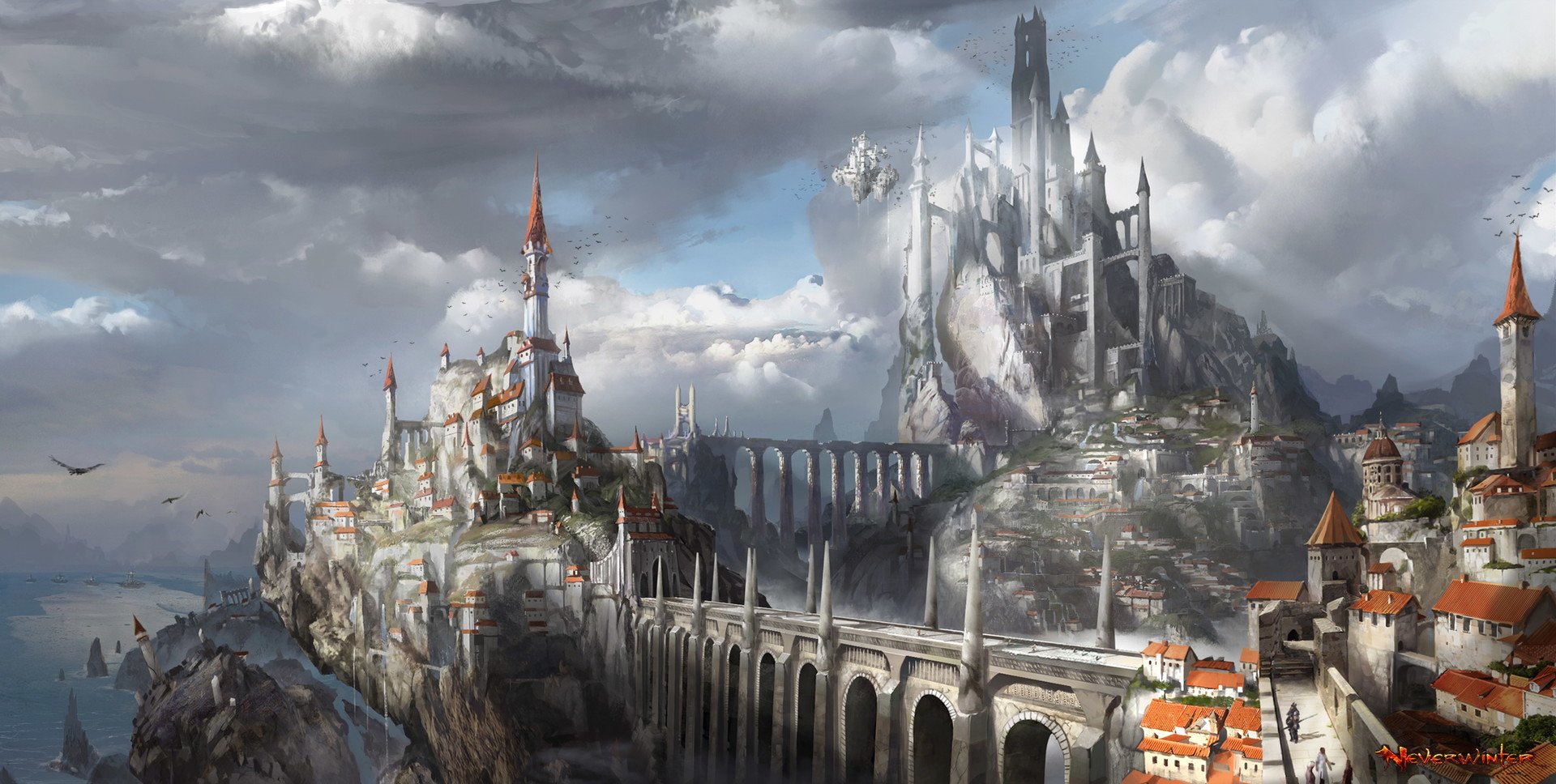
This pressured its ruler, Lord Nasher Alagondar, to invest profoundly in all things martial. This undertaking proved a tremendous success over time as the region was not only overfull with eager native youths, capable warriors, as well as foreign mercenaries, but it also proved to have unanticipated natural resources that had remained untapped due to their former reliance on magical defenses and exports. Bolstered by reinforced numbers, time and again the Greycloaks repelled orcish incursions emboldened by the Longest Year, which became known as the Second Black Horde in 1366 DR, yet the Luskans never encroached upon Neverwinter's lands again, much to the wariness and confusion of locals.
The longer the absence of magic stretched on, the more accustomed its people grew to the new status-quo. In time many among the citizenry and nobility alike began to give voice to a wide-scale assault against Luskan, taking its apparent silence and inaction against Neverwinter as either a sign of weakness or as one of impending doom. No such initiative against Luskan ever took root in a meaningful way in spite of calls to action, nor did Luskan fulfill any doomsayers' dire warnings of a secret, grand assault in the making. Some attributed this uproar to boastful patriotism, more bark than bite, though others uttered of a secret pact of peace between Neverwinter and Luskan to fuel the flames of animosity.
In 1363 of Alturiak, the first spellcasting took place, and with it came both fears old and new. Lord Nasher Alagondar, along with his compatriots in the upper echelons of society, were supposedly loathe to return to the old ways in the wake of their newfound success and growth in power, whilst others believed him to simply be traumatised by recent events surrounding magic, that apparently resulted in the death of his wife. Whatever the truth, he heeded Candlekeep's universal request to start controlling magic with great eagerness and some would say even outright zeal, banning all public displays of magic and issuing harsh laws against 'rogue' magi and divine servants alike - only those licensed were allowed to make use of magic in any fashion, and even then it was said that the Lord was distrustful of any that rose to prominence through the aid of magic.
These events gave rise to the Order of the Unblinking Eye, a sect of Helmites who perceived the return of unsupervised magic as a great danger to the world. The beliefs of these individuals were sometimes fuelled by blind hatred borne of trauma and loss at the hands of magic, or of cold pragmatism that Neverwinter's apparent success gave life to. Even paladins were known to be part of the cause, espousing more goodly and peaceful methods to achieve the same goals, effectively acting as the Order's mediators and steadying hands when zeal threatened to boil over. The Order swiftly became a recognised one within the city of Neverwinter itself, and its members came to be known as the de facto peacekeepers alongside the Greycloaks, supposedly with the quiet approval of Lord Nasher Alagondar. With the city largely secure and rooted in anti-magic beliefs after four years, some of the Order began to look outwards, carrying its agenda to lands bereft of anti-magic laws, as well as to those with already such rulings, to ensure that chaos and discord would not again take hold of such civilised lands - or so they claimed.
The common people of Neverwinter felt little negative change due to how long magic had already been gone, embracing their ruler's decision fully especially given the city's recent prosperity, deferring to his apparent wisdom on matters of statecraft. Neverwinter remains thriving, isolationist and relatively peaceful to this day, barring magical incidents and the hangings of dissidents, of which there has been an increase in recent memory - for better or worse.
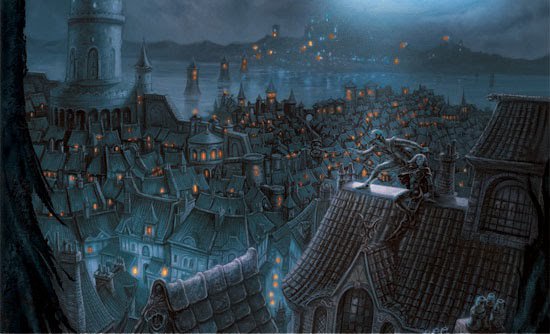
Already infamous for a difficult way of life and its tendency of housing all kinds of scoundrels, pirates, and lowlives, the Longest Year nonetheless managed to transform the city into an utter den of vice and survival of the fittest once the High Captains found common ground and unity once more, naming Beniago Kurth as the First High Captain. Despite this and the presence of the Ten Towns in Icewind Dale Luskan was still considered by many to be civilisation's farthest reach.
Luskan had a history of waging war against lesser powers, both naval and land-locked ones. This warlike demeanour only became an increasingly prevalent trait of the city's, partially due to the High Captains being fully in charge, but also because of the sudden power those of martial inclination found themselves in possession of. After all, there was only an abundance of warriors in the North. Mirabar and the tribes of Uthgardt were the most common of victims, both prior and post the Longest Year, so that they would be kept submissive. The city of Luskan was once known to raid the lands of Neverwinter, its rival, and at times they even staged attacks on the city itself when feeling emboldened by recent triumphs, though none proved successful.
Though Neverwinter's recent prosperity forced the leadership of Luskan to err on the side of caution in any incursion that entailed committing large forces outside of the city, it nevertheless became common knowledge over the years that both cities evidently stayed out of one another's paths now, which sprouted many a rumour of secret pacts and invasions to be on both sides - yet none seemed to know the truth for certain.
The nearest merchant cities and other powers meanwhile found themselves either unconcerned by Luskan affairs or proved stretched too thin to oppose its continuous raiding and attempts at expansion. Waterdeep in particular was said to be far too wary of an attack by the Iron Fleet, should they have committed armies northwards, and few expected the Lords' Alliance to interfere as long the Luskans focused on the islands and northmost settlements.
In 1361 DR Luskan defeated Ruathym (not for the first time) after a large and bloody naval battle in the Trackless Sea. Intent on annexing the island this time around, their forces were however forced to withdraw when faced with seemingly likely war against the Moonshae Isles. The Northlanders appeared with a considerable fleet in the far distance, looming in the horizon. Some said it was only a show of force, a bluff, whilst a paranoid few were assured of imminent war, whispering of envy and greed that would surely see the Northlands wage war against the Luskans despite their retreat. No such war ever came.
In recent memory, Luskan has been harrying Waterdeep's sea trade and continues their oppression of northmost tribes, yet they've retained their distance from the Iron Fleet and Neverwinter, showing no signs of beginning hostilities against either. Though the future is unclear, one thing is certain; the city of Luskan tests its luck and the mettle of others, pushing further and further.
The Sellsword Age
Another name for the Longest Year prevails during the years after the Time of Troubles: “The Sellsword Age.” Without magic, martial skill and prowess became recognised as the only true tool of offense and defense. Most kingdoms strengthened their armies, recruiting from their own people as well as hiring mercenaries. The idea of the Sellsword became a romanticized and popular one, and the numbers of young men and women with swords on their hips swelled across Faerûn. Naturally, so did the prevalence of banditry and common crime, leading to a set of violent years across the continent.
The Advance of Science

Faerûn was a continent heavily suffused with magic, affecting life for many. The Longest Year disrupted the world’s ability to use magic for nearly everything as it once had. The world had to adapt instead, fearing that magic would never return. Wizards and tinkerers of all races retained their intellect, and applied it to new advancements in old sciences.
When magic did return, albeit far weaker, progress was well underway in several fields that had at best a minimal reliance on arcane or divine magics.
The practice of mundane medicine was one such science that made spectacular progress during and since the Longest Year. Without the occasional reliability of divine healing, natural remedies and surgical practices became more advanced and commonplace. Anesthetics, antiseptics, and anatomy became widely known and relied on. Natural remedies distilled into usable form began curing simple illnesses and even common ailments such as headaches.
Tied to medicine was the greatest field to advance of them all: Alchemy.
Alchemists that had always relied on a combination of ingredients and magic began to rely more on the former and less on the latter, if any at all. Alchemy became a true science rather than a passing fancy in a world that had greater powers available to it, and began to substitute magic in many places, including in the arsenal of adventurers.
Alchemy mirrored divine healing, though in limited degrees. It allowed for contained alchemical fire, acid, and potent poisons. It led to solvents and adhesives, to balms and tonics that could provide practically magical benefits.
One of the most high-profile advents in Alchemy was in explosives and propulsion. A brilliant but short-lived wizard created an alchemical paste-like compound that could produce substantial explosions, but only when it reached a rather large critical mass; his invention had earned the moniker of “fireclay” for its dull red colour, consistency, and explosive properties. Substantial metallurgical work was required to contain the explosive power and harness it to what humans made best: weapons. These cannons were extremely large and bulky, and could not be made smaller due to the nature of the fireclay itself.

